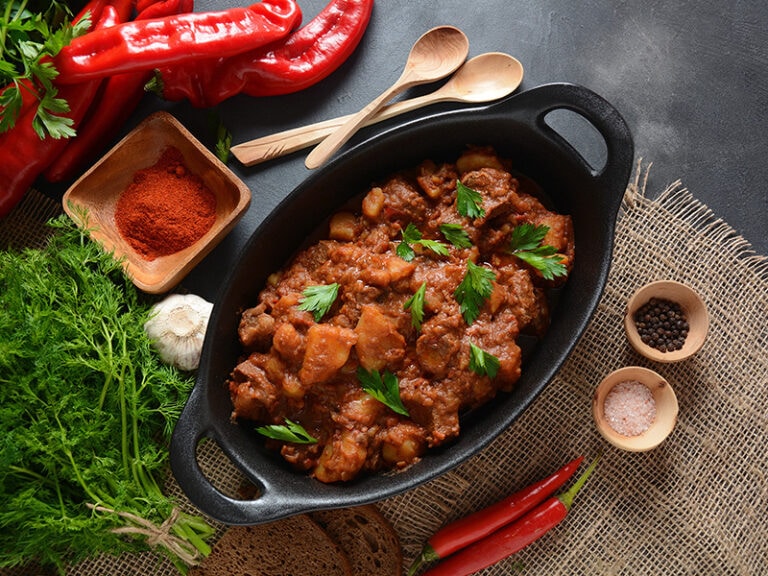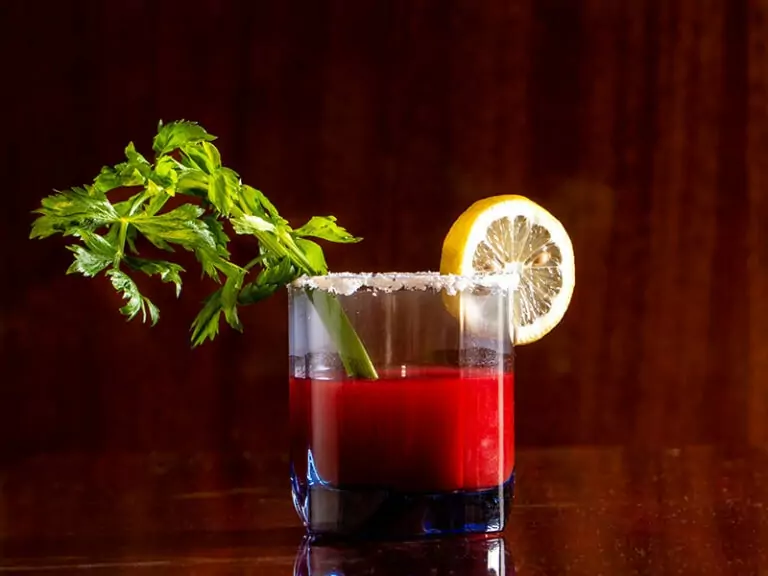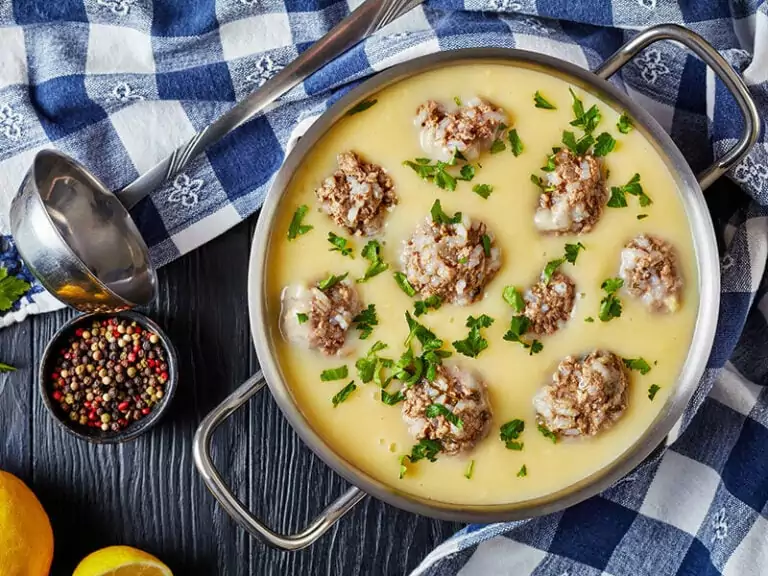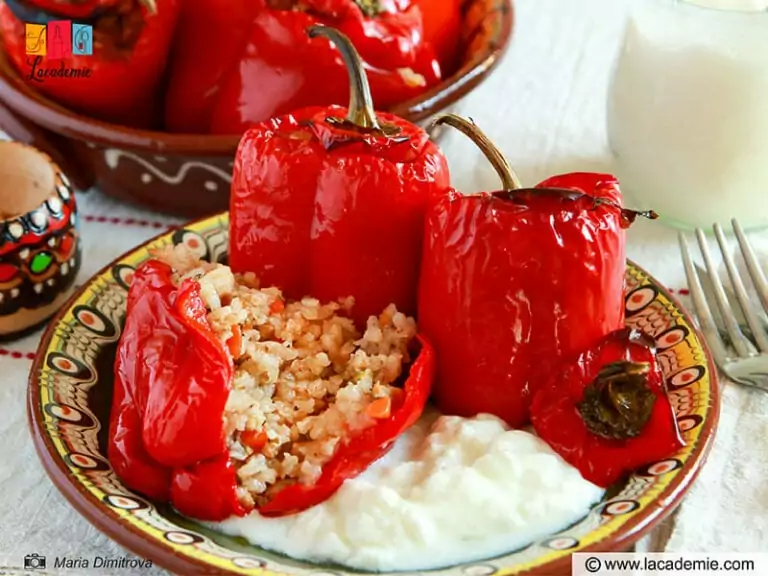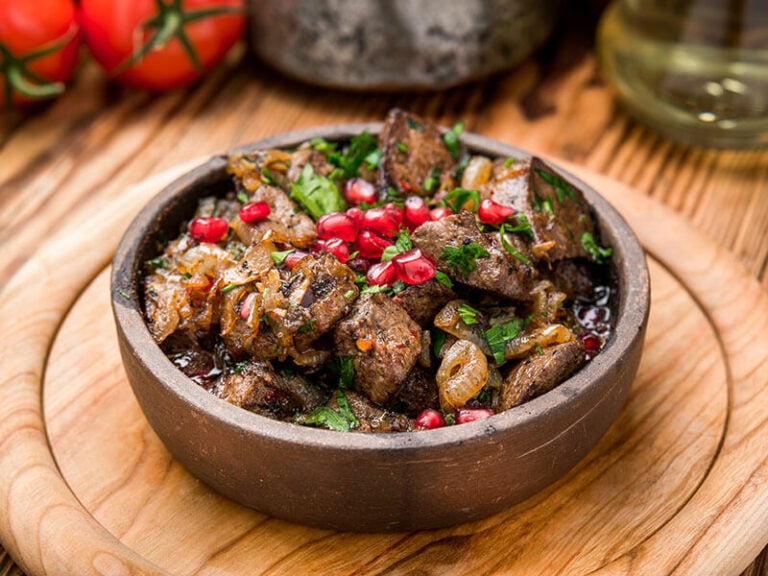Exploring traditional European dishes is like turning the pages of a delicious picture book. This culinary canvas stretches from the hearty, satisfying dishes of the cold north to the light, flavourful fare of the Mediterranean south.
Through this article, I will offer you a glimpse into this vibrant gastronomy. You will learn about diverse regional cuisines in this part of the Old World, uncover the stories behind iconic dishes, and gain insight into the ingredients and cooking techniques that shape these delightful meals.
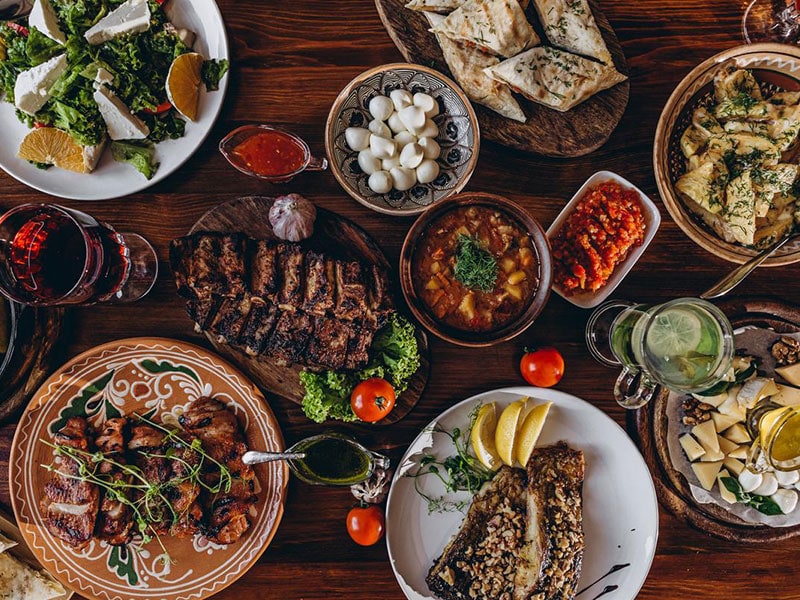
Definition of Traditional European Dishes
Traditional European dishes refer to food preparations and recipes that have originated and been cultivated within the cultural sphere of Europe. In this article, I will divide them into five main regions.
These dishes can range from the rich and hearty stews of Eastern Europe to the delicate and sophisticated pastries of France, the savory appetizers in Italy, and beyond.
Historical Overview
The rich history of Europe’s culinary traditions dates back to antiquity, to the age of the Roman Empire and the civilizations that preceded it. Many ingredients and cooking techniques vital to European cuisine were established then.
During the Middle Ages, spice trade routes opened, introducing flavors such as pepper, saffron, cinnamon, and ginger to European kitchens.
Later, the Age of Exploration, beginning in the 15th century, led to the discovery of the New World. New ingredients from the Americas were brought to Europe and completely reshaped the cuisine. Winter squash, tomatoes, corn, potatoes, and many types of beans were the result of this exchange. [1]
Starting in the 16th century, haute cuisine began to develop, particularly in France, where professional chefs started to emerge. This era also saw the creation of the first restaurants.
In the 19th century, canned and processed foods appeared with the advent of industrialization. Modern times come with a counter-movement that emphasizes fresh, local produce. The conflict between them continues to resonate in contemporary European and worldwide cuisine.
In Eastern Europe
1. Armenia
In traditional Armenian cuisine, the locals consume lots of fresh fruits and vegetables (especially eggplants), meat (like mutton), bulgur wheat, herbs, legumes, yogurt, and cheese.
Though living in a landlocked country, they also have a lot of fish dishes. Their foods bear influences from European, Levantine, and Ottoman cooking.
Harisa / Harissa (Armenian Wheat And Chicken Porridge)
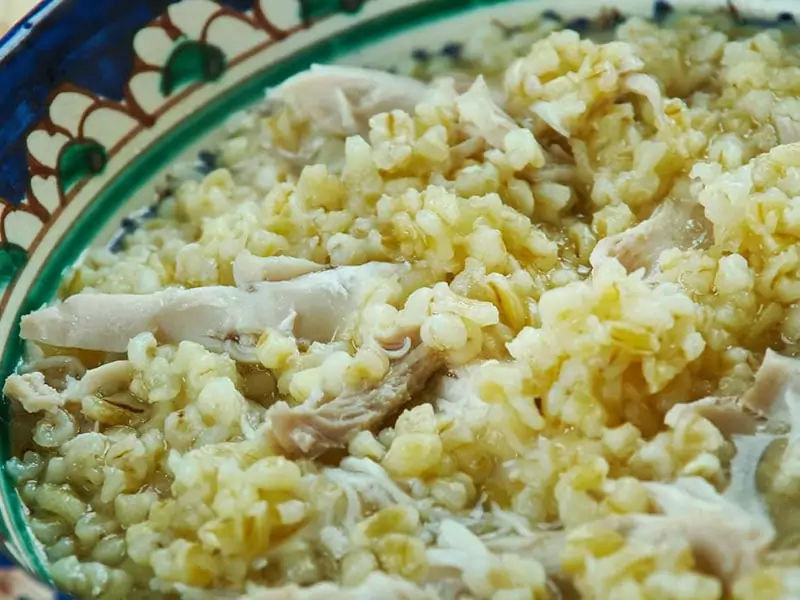
This comforting Armenian dish is a slow-cooked porridge consisting of korkot (dried or roasted cracked wheat) and meat, predominantly chicken or lamb. The cooking process gradually breaks down the ingredients to create a creamy consistency and deep flavors.
This dish is so crucial to Armenian culture as it is informally considered the country’s national dish. It is traditionally prepared during the Easter holiday and community gatherings. Harisa is also a symbol of American endurance through hard times.
2. Azerbaijan
Sitting at the crossroads of Europe, Asia, and the Middle East, all Azerbaijani specialties are as diverse as they are flavorful. The best feature is probably the abundance of fresh ingredients, including vegetables, various meats, and seafood from the Caspian Sea.
Meat and dairy products also play an important role. The liberal use of herbs and spices brings out the flavors of these ingredients is another wonderful trait.
Plov (Mixed Rice With Herbs And Spices)
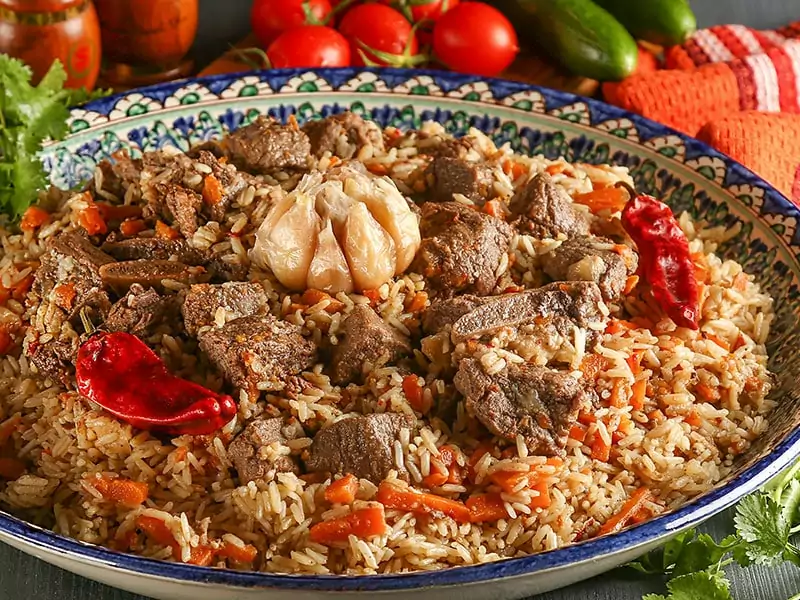
Azerbaijani Plov is a yummy take on the popular pilaf. It is a celebration of flavors with a blend of saffron-infused rice, meat (usually mutton or chicken), dried fruits, nuts, and vegetables.
While the recipe changes from place to place, Plov is always a dish for special occasions. There are various types of Plov, such as Shirin Plov (made with dried fruits and nuts) and Sabzi Plov (consisting of meat and greens or fresh herbs).
3. Belarus
Simplicity, comfort, and warmth is the core of the exotic Belarusian cuisine. Key staples are potatoes, meat (like pork and beef), cabbage, beets, and bread, especially rye bread. The first one is particularly important. Soups (such as borscht) and hearty stews are also central.
Draniki (Belarusian Potato Pancakes)
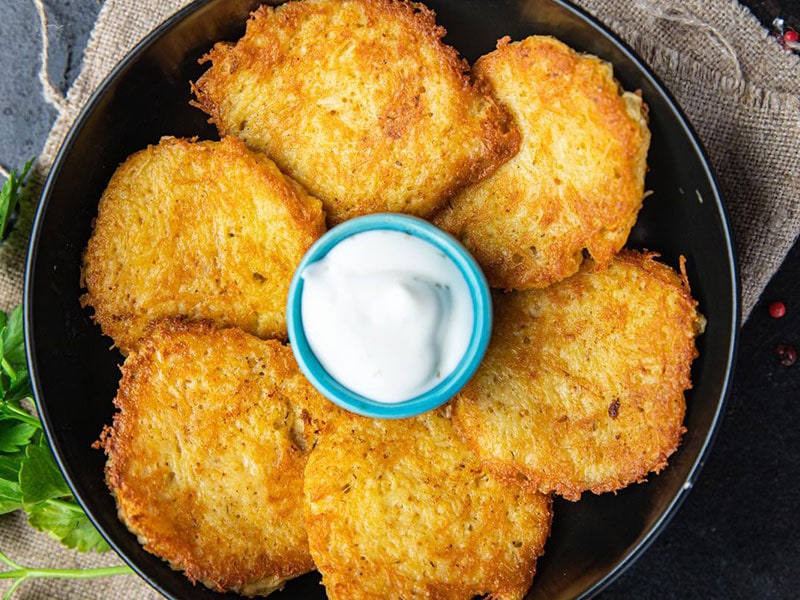
Draniki showcases the country’s affection for potatoes. Locals prepare it by grating potatoes, mixing them with chopped onions and spices, then frying the mixture into thin, golden pancakes. Some versions may include meat for added flavor.
Belarusian potato pancakes are an excellent side, entree, and breakfast dish. They are often accompanied by sour cream, a staple in many Eastern European cuisines.
4. Bulgaria
Bulgarian cuisine is a mix of culinary traditions from East and West, bringing together influences from the Greeks, Turks, and Slavs. Like its neighbors in the Balkans, many foods in Bulgaria are rich, hearty, and focused on local ingredients.
Meats, particularly pork, beef, and lamb, are central to many Bulgarian meals. Soups, stews, salads, and grilled dishes account for a large part of Bulgarian fare.
Shopska Salad
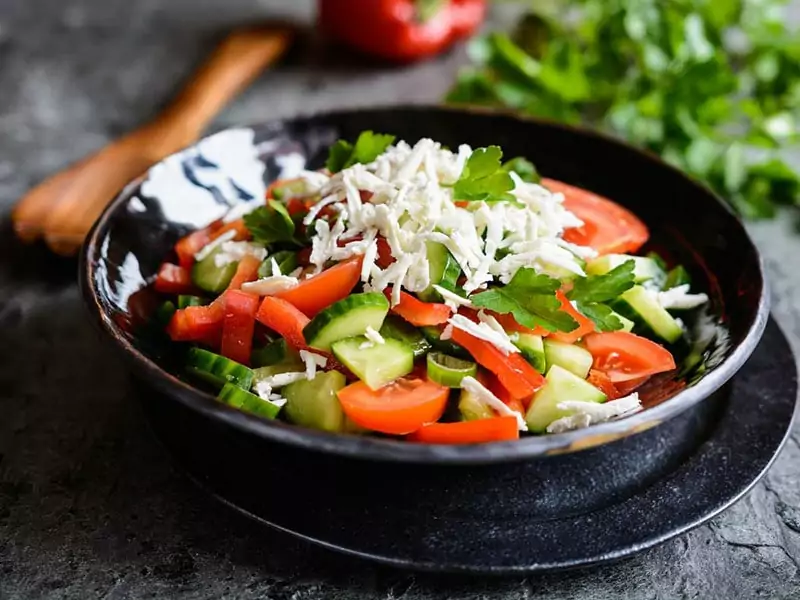
One of the most refreshing Eastern European recipes, this cold salad combines diced tomatoes, cucumbers, onions, and raw or roasted peppers. Crowning them is a layer of sirene cheese, Balkan brined white cheese. The result is a beautiful dish that resembles the colors of the Bulgarian flag.
Sometimes garnished with parsley and olives, Shopska salad is cherished for its freshness and stimulating flavors. In summer, it’s a cooling, hydrating accompaniment to many meals.
5. Kazakhstan
Kazakhstan’s cuisine is a mirror of its rich history and nomadic traditions. The dishes in Kazakhstan center around mutton, horse meat, and various milk products.
Drying and salting are popular food preservation techniques. Interestingly, Kazakh people are among the most avid tea consumers in the world.
Beshbarmak (Boiled Meat With Noodles)
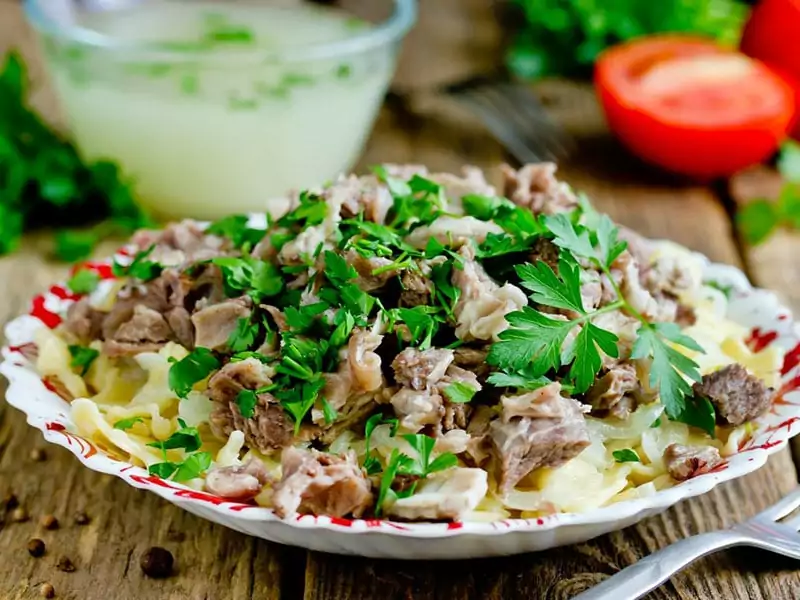
The name means “five fingers” in the local tongue, hinting at the traditional way of consuming it with your hands. This hearty dish incorporates boiled meat, usually lamb or beef, served on top of boiled pasta sheets with a savory broth. It is typically prepared for communal meals and celebrations.
6. Moldova
Moldovan cuisine reflects the beauty of its lush orchards, vineyards, and farmland. With influences from Romanian, Russian, and Turkish cooking traditions, it relies on meats, dairy products, fruits, potatoes, cabbage, and many other vegetables.
Given the country’s abundant vineyards, wine is an essential part of this cuisine. It’s not uncommon to pair or prepare local dishes in Moldova with a glass of local wine.
Hailing from the autonomous region of Gagauzia in Moldova, Gagauz cuisine is reminiscent of the nomadic past, with liberal use of meats and dairy products.
Mămăligă (Cornmeal Porridge)
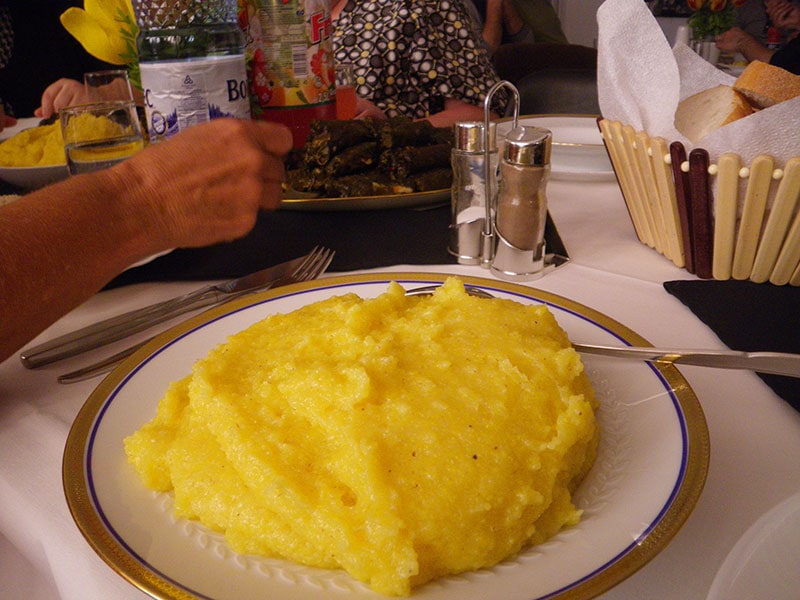
Though Mămăligă is a famous Romanian dish, it is also a staple in Moldovan cuisine. This polenta-like dish is prepared by cooking cornmeal with water until it forms a golden, dense, and soft mass.
Thanks to being even thicker than bread, Mămăligă can be served in different forms: cut into squares, as a bed for stews, or with accompaniments like cheese and sour cream.
7. Ossetia
Nestled in the Caucasus Mountains, Ossetia offers many exquisite dishes. Thanks to the land’s agricultural richness, local foods are teeming with local products like grains, cheese, meat, and vegetables.
Fydzhin (Ossetian Meat Pie)

Ossetian Fydzhin is a round pie. It consists of a thin wheat-flour dough encasing a rich filling of cheese, potatoes, ground beef, beef broth, and spices. Locals often bake at least three pies to commemorate god, sun (sky), and land.
Fydzhin is extremely popular in Russia, so if you can’t come to Ossetia to try it, Russian bakeries and restaurants are the next best place.
8. Romania
Since it is located at the crossroads of Central and Eastern Europe, the diverse food culture in Romania is a testament to its diverse influences, combining elements of Balkan, Ottoman, Austro-Hungarian, and French culinary traditions.
Sarmale (Romanian Cabbage Rolls)
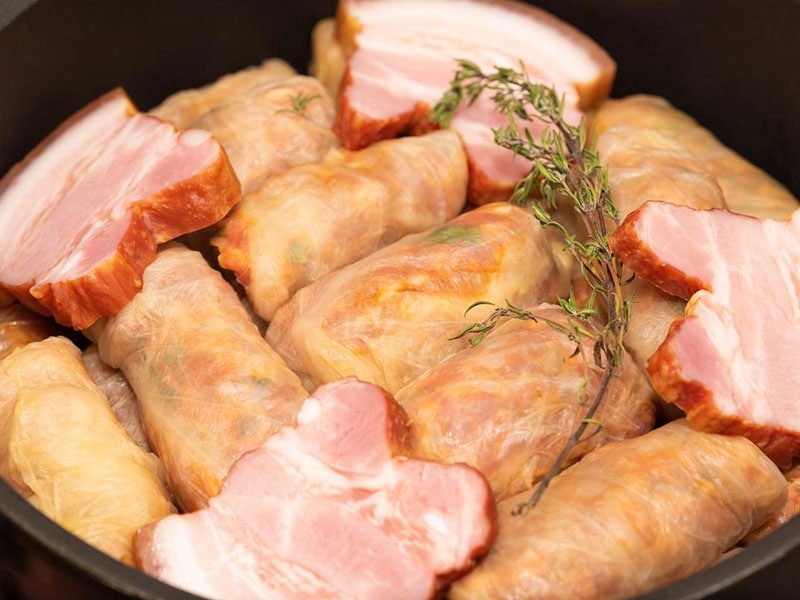
Sarmale is derived from dolmas, a famous Ottoman dish of stuffed vegetables or grapevine leaves. In Ottoman cuisine, it is known as Sarma. This dish is a Romanian staple during Christmas, Easter, and other festive occasions.
These cabbage rolls are carefully packed with a mixture of minced pork or beef, onions, spices, and rice. Besides cabbage, monk’s rhubarb or grapevine leaves can be used.
After slow-cooking the rolls with sauerkraut and tomato juice, locals pair them with sour cream and a side of Mămăligă (cornmeal porridge).
9. Ukraine
Many hearty, nutritious dishes in Ukraine have become the mainstays of nearby cuisines, especially Russia. Staple ingredients include potatoes, grains, fresh and pickled vegetables, and various meats.
Two important pillars of Ukrainian cooking are Crimean Tatar cuisine (from the Crimean Peninsula) and Odesite cuisine (from Odessa).
Borscht (Beet Soup)
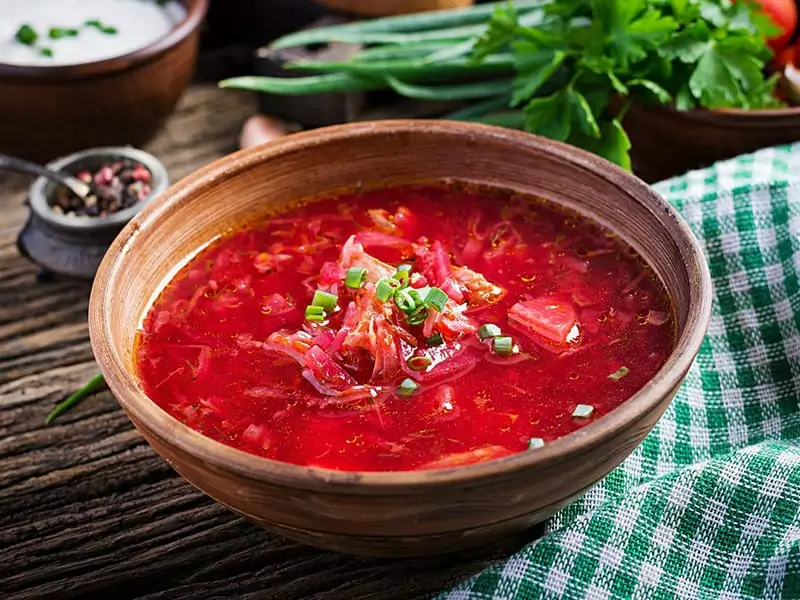
The signature ruby-red color of this hearty soup comes primarily from beetroot, which also lends a wonderful blend of sweetness and sourness. Additional ingredients include potatoes, cabbage, carrots, onions, and sometimes meat.
These combine to create a deeply satisfying and nutritious meal. Borscht pairs well with Pampushka (a type of garlic bread) and sour cream since both can balance the earthy sweetness of the beetroot.
10. Russia
Russian cuisine is a fascinating blend of flavors influenced by the country’s vast landscape and cultural history. Russian culinary scene varies across regions, from hearty dishes in the north to delicate flavors in the south.
Staples like cereals, potatoes, and dairy products form the foundation of many meals. Meat (beef, pork, and game meats) and fish (particularly salmon and sturgeon) are abundant and widely consumed.
So are fermented foods, like sauerkraut and pickles. Traditional baking includes bread, pastries, and pancakes, which are often accompanied by preserves and honey.
Many little-known yet interesting cuisines contribute to the overall richness of Russian foods. Some examples are North Caucasian cuisine, Mordovian cuisine, Yamal cuisine, Udmurt cuisine, Komi cuisine, and Bashkir cuisine. They are located in Southern Russia or Siberia.
Pelmeni (Russian Dumplings)
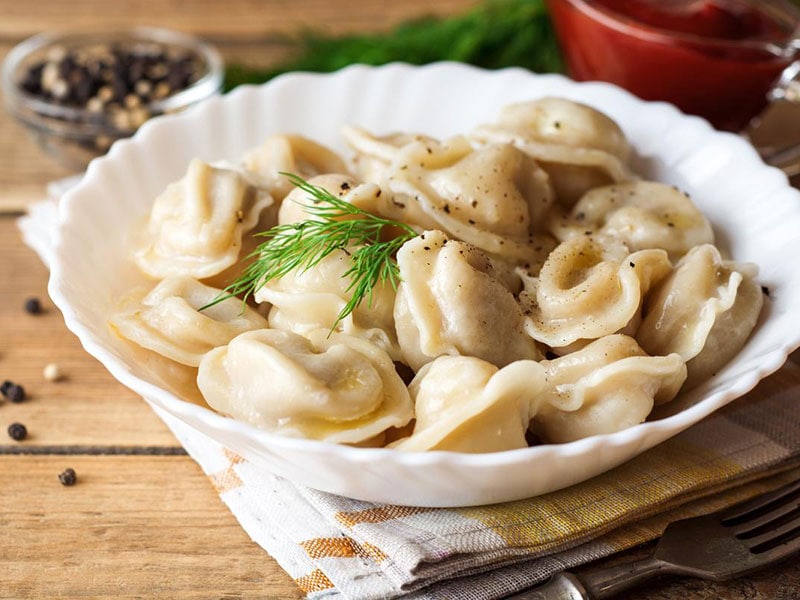
These easy-to-make dumplings bring together simplicity and deliciousness. Their filling typically consists of a blend of beef, pork, and occasionally lamb . To enhance the taste, the filling is seasoned with onions, garlic, and aromatic herbs.
Each dumpling is individually shaped and sealed by hand before being boiled until they reach the perfect level of tenderness. Frying them until crispy is another cooking method. Traditionally served with a dollop of sour cream, these dumplings can also be enjoyed with Borscht or mayonnaise.
11. Georgia
Many have known Georgian beautiful dishes come with bold flavors, generous use of herbs and spices, and emphasis on savory meat dishes featuring lamb, beef, and poultry. Another hallmark of Georgian cuisine is bread and how to prepare it with a traditional clay oven called a tone.
Nuts and fruits (especially pomegranates) are other interesting ingredients. Georgians also take pride in their unique winemaking traditions, which are among the oldest in the world.
Khachapuri (Georgian Cheese Bread)
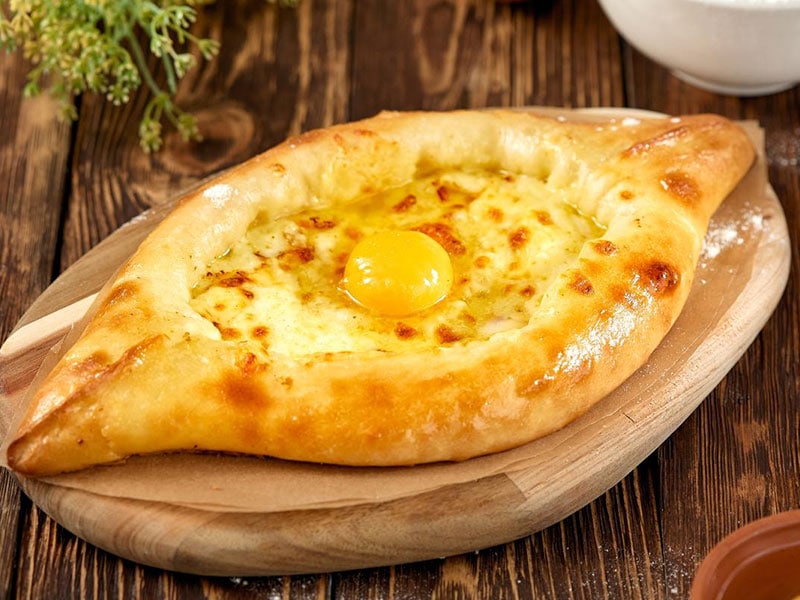
Khachapuri is a traditional cheese-filled bread with the shape of a boate. The star of the show lies under the yeast dough: a cheese filling typically made with a combination of salty and tangy Georgian cheeses like sulguni and Imeruli cheese.
An egg is usually cracked on top of each Khachapuri before baking to an extra layer of richness. The result is a heavenly combination of fluffy bread and gooey, savory cheese. Consumers often tear off pieces of the bread to dip into the cheese-filled center.
In Central Europe
12. Ashkenazi Jews
Many comforting dishes in Ashkenazi Jewish cuisine have affected the Central European countries, such as matzo ball soup, gefilte fish, and Latkes (potato pancakes).
While it relies on fresh and local ingredients (especially root vegetables and brisket), preserved foods are also important. Butter and vegetable oils are popular cooking fats.
Gefilte Fish (Stuffed Fish)

Ashkenazi Jews have a long-standing tradition of preparing gefilte fish, which is essentially patties or balls of deboned, minced fish. Carps, pikes, and whitefish are among the most favorite choices. The fish mixture is then combined with ingredients like onions, carrots, eggs, and matzo meal.
Next, the patties or balls are simmered in a savory fish stock. Despite variations in preparation, it’s tradition for this dish to be served chilled, accompanied by a slice of carrot and a dollop of horseradish. Gefilte fish (pronounced geh-filt) is a Sabbath, Passover, and even Lent staple.
13. Poland
There is a lot of meat, dairy products (especially butter and cream), eggs, and seasoning in Polish unique delicacies. There is even a term called “à la polonaise” (“Polish-style” in French) to indicate cooking methods that rely on these ingredients.
Among the various regional cuisines in Poland, three stand out: Lubin, Świętokrzyskie, and Podlaskie.
Kotlet Schabowy (Breaded Pork Cutlets)
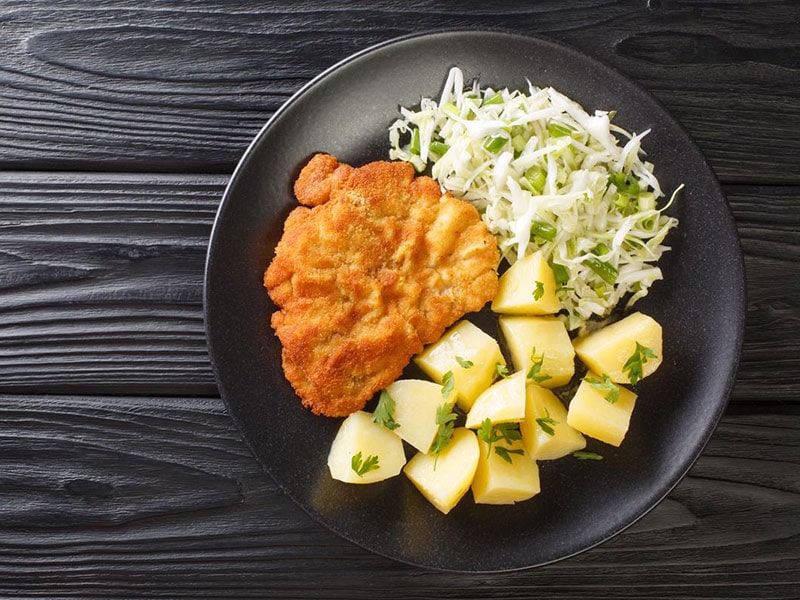
Except for the main ingredient, this breaded and fried pork cutlet dish is akin to the schnitzel found in other parts of Europe. In fact, it might have originated from Viennese schnitzel.
Preparation starts with tenderizing a pork loin cutlet, then dipping it into a beaten egg mixture, followed by breadcrumbs.
Doing so will give it a golden-brown crust that crisps beautifully upon frying. Upon serving, Kotlet Schabowy pairs well with mashed potatoes, pickled cabbage, or cooked vegetables.
14. Liechtenstein
Like its alpine landscapes, Liechtenstein’s cuisine showcases the simplicity and purity of its culture. Nestled between Austria and Switzerland, this small country has drawn on the culinary influences of its neighbors.
Seasonal produce, fresh dairy, and high-quality meats are the building blocks of Liechtensteiner food. Seasonality plays an important role, with dishes varying throughout the year based on what’s available.
Käsknöpfle (Cheese Pasta With Sweet Onion)
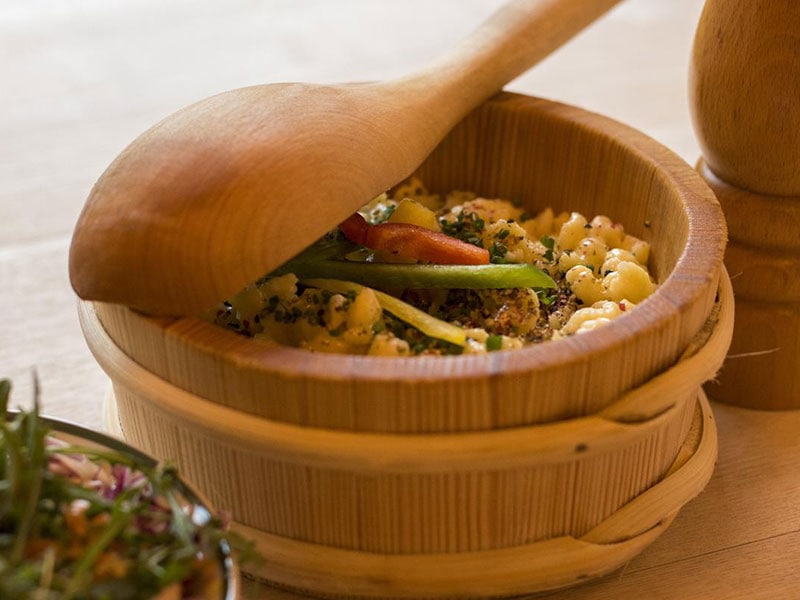
One of Liechtenstein’s most emblematic dishes, Käsknöpfle is created around a triad of Spätzle (egg noodles), cheese (ideally hailing from the Alps), and caramelized onions.
To make Spätzle, a dough is prepared from eggs, flour, salt, water and pressed through a sieve or a special grater. The resulting noodles are layered with grated cheese and topped with fried onions before being baked. Popular side dishes for Käsknöpfle include applesauce and potato salads.
15. Silesia
Anchored in the culture of the Silesia region, Silesian cuisine is a blend of Polish and German cuisines. It boasts many wonderful Central European recipes from these countries.
Originally bland in flavor, Silesian foods became significantly heartier and more meat-oriented when mining began in the region in the 18th century, raising standards of living and the needs for richer food.
Żymła (Silesian White Bread)
Żymła is a famous bread roll from Silesia. It offers a soft and fluffy interior balanced with a crunchy, poppy seed-studded outer crust. The distinctive round shape with a split cross in the center isn’t just about aesthetics but also ensures uniform baking.
16. Slovenia
Slovenian cuisine is a harmony of Alpine heartiness, Mediterranean freshness, and Balkan generosity. The use of fresh and locally sourced ingredients is deeply embedded in all amazing dishes in Slovenia.
Bread, herbs, meat, mushrooms, berries and seasonal vegetables (with exciting choices like dandelion) play a prominent role.
Ajdovi Žganci (Buckwheat Spoonbread)
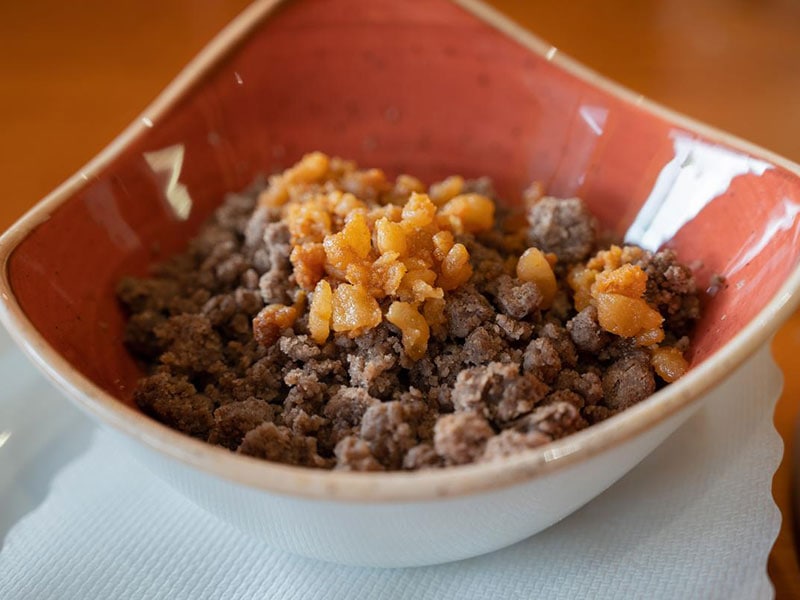
This simple and rustic dish pays homage to the country’s agricultural heritage. The main ingredient is buckwheat flour, one of Slovenia’s oldest cultivated crops. It is cooked in water along with some pork fat, though vegetarians can replace the latter with olive oil.
Ajdovi Žganci is traditionally topped with pork cracklings and served with sauerkraut, sausage, cheese, or black puddings. From a breakfast food for farmers, it is now a favorite dish for any meal of the day for everyone.
17. Hungary
Also known as Magyar cuisine, the fantastic Hungarian cuisine has a penchant for paprika. Its love for meats and hearty stews is also legendary. But you can easily find dishes made entirely with vegetables and cheese.
In Hungary, popular cooking techniques are slow simmering and braising. Central European influences are evident, but there are also hints of Italian, German, and Slavic culinary traditions.
Gulyás (Hungarian Goulash)
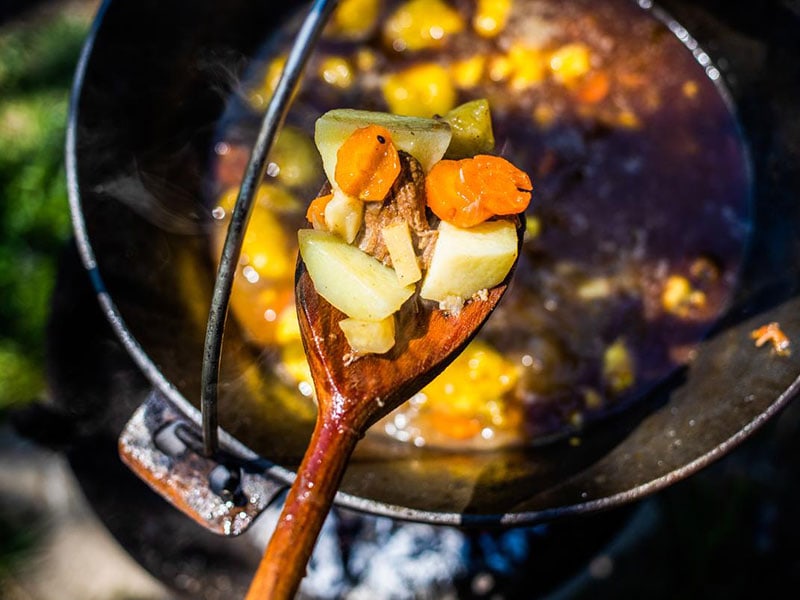
Historically, Gulyás was a humble dish prepared by herdsmen in the vast plains before eventually becoming Hungary’s national dish. It is cooked in a “bográc,” a kettle hung over an open fire. Key ingredients include beef (especially from the shank or shoulder), carrots, onions, and the pride of Hungary: paprika.
This vibrant and earthy spice lends its signature color and flavor to the stew, while caraway seeds add a distinct aroma. Preparation involves slow cooking, softening the meat and enriching the broth. While Gulyás is soupier than other stews, its deep flavor is second to none.
18. Czech Republic
The hearty comfort Czech cuisine (+ Czech foods) emphasizes meats, root vegetables, and grains, with pork, potatoes, and wheat being fundamental. Soups and meat dishes (like roasted, stewed, or baked soups) are prevalent. To enrich flavors, cream-based sauces are an essential component.
Influences from neighboring Germany, Austria, and Hungary reflect the country’s Central European identity. Beer is a popular accompaniment for dishes. In fact, the Czech Republic has the world’s highest beer consumption per capita. [2]
Vepřo Knedlo Zelo (Pork Roast With Dumplings And Sauerkraut)
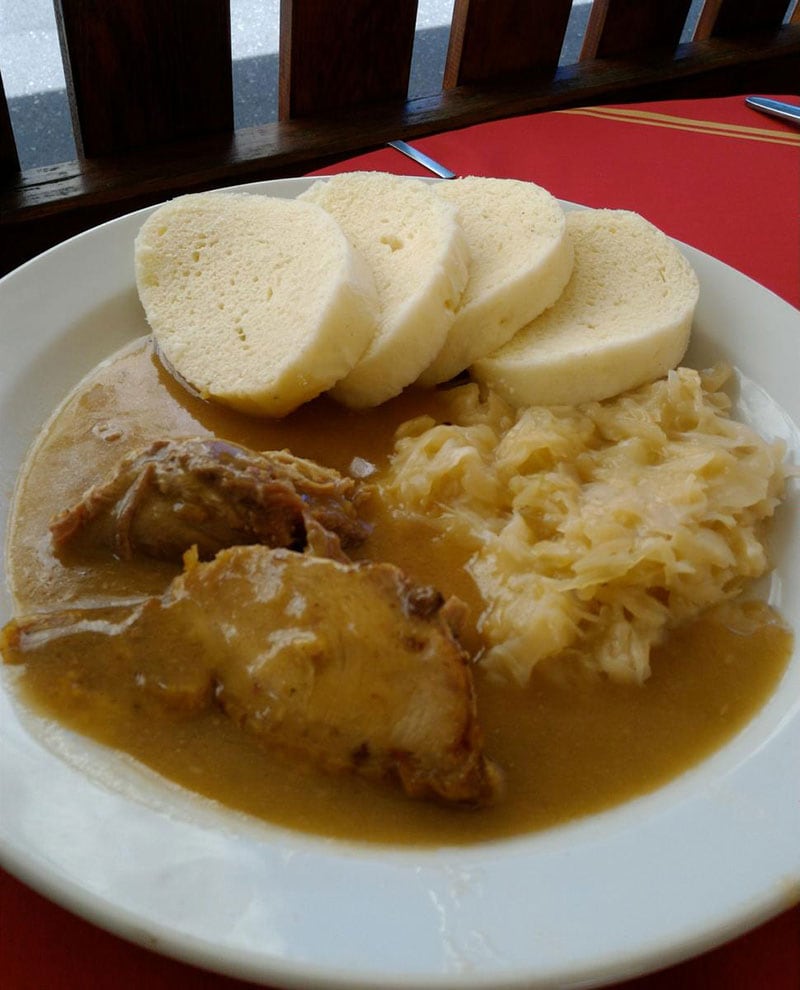
This Czech culinary classic is a hearty trio of roasted pork, bread dumplings (knedlíky), and sauerkraut. But there is another secret ingredient to prepare: a rich gravy made of roast drippings, flour, and spices. Drizzle it over the other ingredients, and this Czech gem is complete.
The best cut for pork roast is the shoulder: it should be generously seasoned with garlic and caraway seeds. Its savoriness goes flawlessly with the mildly tangy sauerkraut and fluffy bread dumplings, which serve as a sponge for the flavorful pork drippings and sauerkraut juices.
19. Switzerland
Many have know about the diverse Swiss cuisine (+ Swiss foods) with its landscapes and regional cultures, a beautiful blend of German, French, and Italian culinary traditions. It leans heavily on dairy products, with cheese playing a starring role.
The Swiss affinity for hearty, stick-to-your-ribs fare means liberal use of potatoes and meats, with emphasis on simple dishes packed with flavor. Chocolate, bread, and various meat products (like cured meats or sausages) are Switzerland’s renowned exports.
Rosti (Swiss Potato Cake)
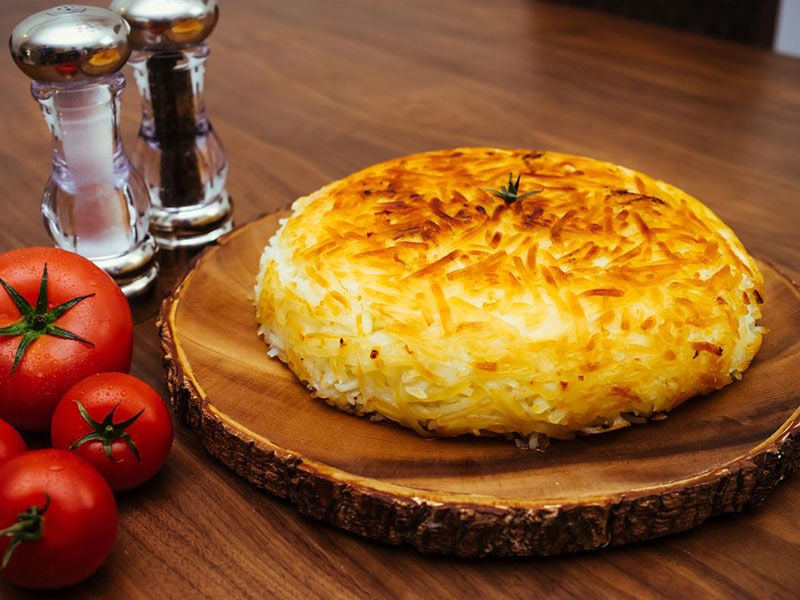
Also known as Rööschti, this Swiss staple is basically a crisp, golden pan-fried potato pancake. Think of it as Swiss hash browns made with grated raw potatoes. It began as a breakfast dish for farmers in the canton of Bern, Switzerland’s capital city. Now, Rosti graces tables nationwide, day or night.
This dish is a wonderful side for breakfast eggs, roasted vegetables, sausages, and more. Traditional Rosti consists purely of potatoes, with no eggs or flour, but modern versions can include onions or bacon.
20. Austria
In general, toothsome Austrian cuisine, especially Viennese cuisine, is the epitome of Central European cooking. It has a soft spot for dishes rich in proteins and carbs. Meanwhile, baking is a revered craft, with an impressive range of breads and pastries.
Root vegetables, dairy products (especially cheese and cream), and meats are popular ingredients. Many Austrian dishes contain beef, pork, veal, geese, and wild game.
Wiener Schnitzel (Austrian Veal Cutlet)
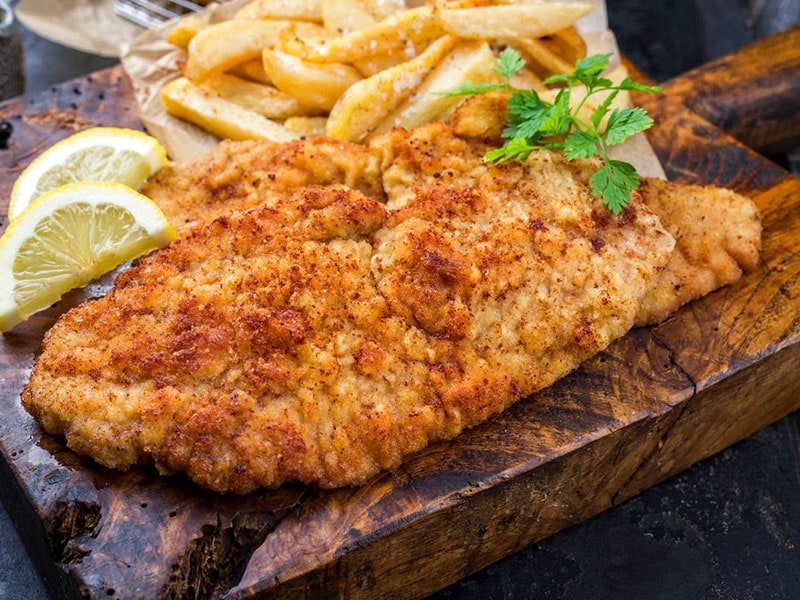
One of Austria’s national dishes, Wiener Schnitzel is prepared by coating a thin veal cutlet with flour, beaten eggs, and breadcrumbs before frying it to golden-brown perfection. The result is a satisfying contrast between a tender meat interior and a crispy exterior that isn’t too oily.
The right way to serve this dish is to garnish it with a slice of lemon and parsley, plus a potato salad or cucumber salad on the side. There are many dishes similar to Wiener Schnitzel in other cuisines, but this Austrian recipe relies on veal.
21. Germany
In the rich German cuisine, you can find countless regional traditions: Schleswig-Holstein, Hamburg, Mecklenburg, and Lower Saxon cuisines are northern gems, while Brandenburg, Pomeranian, and Saxon cuisines reign in the east.
Meanwhile, Bavarian (including Franconia and Palatine cooking traditions), Baden, and Swabian cuisines are popular in the south, and Hessian cuisine dominates western Germany.
Generally, meat (pork, beef, and poultry), potatoes, bread, and dairy products are staple ingredients in German cuisine. Cooking methods vary across regions, but roasting, baking, and stewing are popular. Preserved foods, like pickles and fermented vegetables, are a common sight.
In short, German food culture leans towards hearty, comfort-driven meals, with robust beers and wines to match.
Sauerbraten (Sour Roasted Meat)
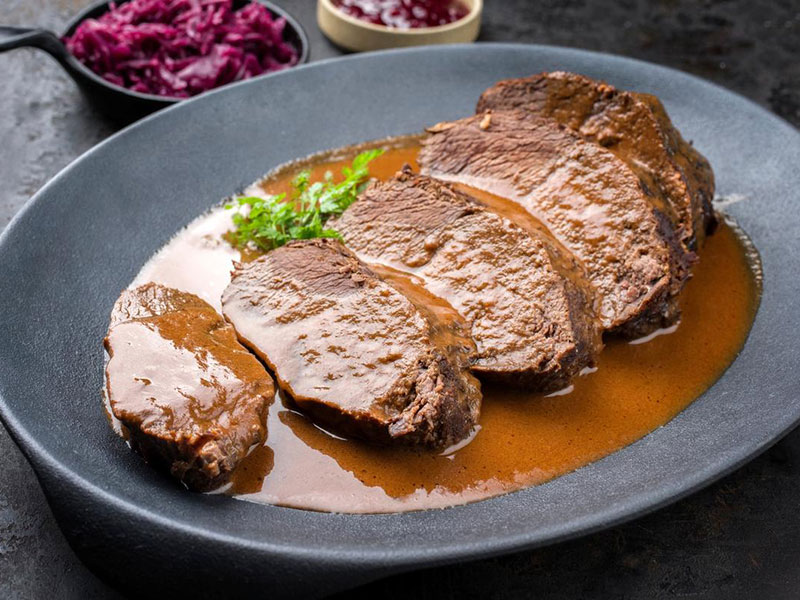
Do you know how Germans prepare this exquisite take on roast meat? They bathe a tough cut of meat, usually beef, in a marinade of vinegar and spices for several days, then slowly braise it. This marinating process tenderizes the meat and imparts a unique, tangy flavor.
Once the meat is succulent and tender, the leftover marinade is transformed into a rich, aromatic gravy. The result? A harmonious balance of sour, sweet, and savory that goes excellently with dumplings, potato pancakes, or noodles.
22. Slovakia
Slovak cuisine reflects the country’s rural past. Its simple yet nourishing dishes rely heavily on staples like potatoes, cabbage, dairy products, mushrooms, pork, poultry, and hearty sauces. The rustic Slovakian food culture also values preservation techniques, like pickling and smoking.
Bryndzové Halušky (Slovak Potato Dumplings With Bryndza)
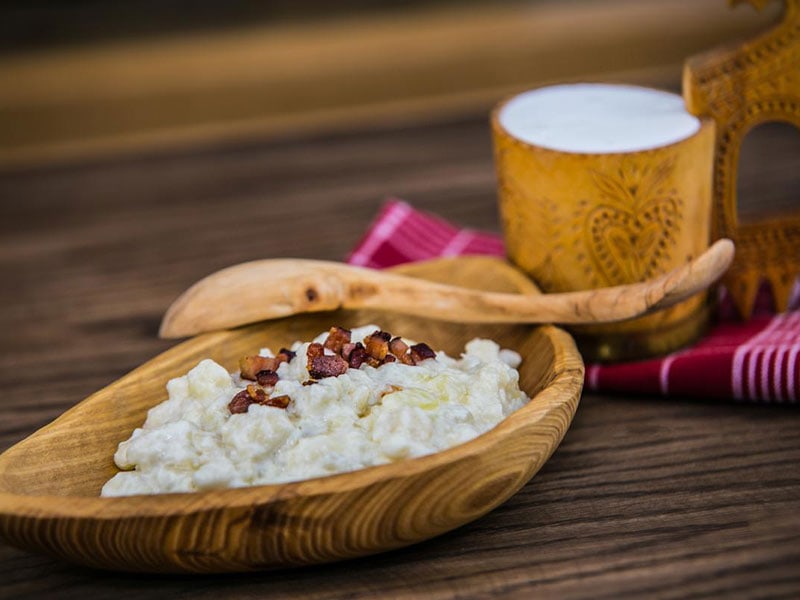
At the core of this Slovak delicacy are halušky (small potato dumplings) generously topped with bryndza (a soft, tangy sheep cheese). Finished with bits of crispy fried bacon, drippings, or spring onions, this dish presents Slovak love for simple and locally obtainable ingredients.
This dish originated from the Slovakian mountainous regions, where sheep farming is widespread, and has long been a beloved part of local festivals and family gatherings. Rather than using cutlery, you should scoop it up with a spoon.
In Northern Europe
23. Denmark
Denmark’s geographical position means seafood is integral, while the country’s fertile lands offer a bounty of root vegetables, berries, and grains. Meat and dairy products, particularly cheese, play a crucial role as well. The regional cuisine of the Faroe Islands uses these ingredients extensively.
The Industrial Revolution brought more ingredients and cooking techniques, opening new doors for Danish traditional dishes to grow. As the birthplace of the New Nordic Cuisine movement, modern Danish cuisine also reflects a strong commitment to sustainability.
Smørrebrød (Danish Open-Faced Sandwiches)
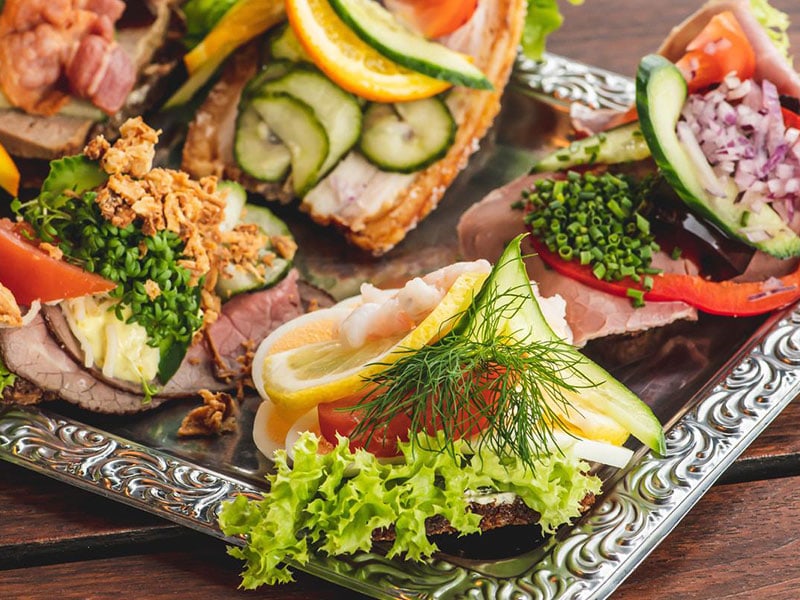
Whether you have breakfast, lunch, snack, or picnic in Denmark, this culinary gem is always around. It is simply a slice of buttered rye bread adorned with an assortment of fish, meats, cheese, and vegetables.
The tradition of Smørrebrød goes back to the mid-19th century when it served as a hearty lunch for workers. Over time, this versatile dish became an icon of Danish dining. While you can eat it with your hands, the proper way is to use a fork and a knife.
24. Iceland
Icelandic cuisine is influenced by harsh geographical conditions. The emphasis on preserving food dates back to the Viking Age, when fresh food was not always available. Preservation methods, such as smoking, fermenting, and drying, are prevalent.
Local resources like seafood, wild berries, and lamb are fundamental for unique dishes in Iceland, thanks to the surrounding ocean and lush pastures. There has been a modern shift towards continental European cooking.
Kjötsúpa (Icelandic Lamb Soup)
No one can deny how nutritious this Icelandic soup is when they look at the amount of lamb, root vegetables, and herbs in it. Serve Kjötsúpa hot, and you will get used to Iceland’s chilly weather.
Historically, Kjötsúpa has been an essential way to utilize all parts of the lamb, a vital food source in the harsh Icelandic climate. Nowadays, it is a popular choice in local restaurants and eateries across Iceland.
25. Sweden
Swedish cuisine mirrors its geographical diversity and changing seasons. There are many differences between the Swedish foods from North to South.
Another interesting characteristic of Swedish gastronomy is the concept of “lagom” or “just the right amount”, emphasizing balance and moderation.
Famous dishes highlight locally sourced ingredients, such as seafood, game, root vegetables, berries, and dairy products. Seafood is particularly significant along the coasts, while inland regions are more inclined towards meat and game (Sami cuisine really values reindeer meat).
Köttbullar (Swedish Meatballs)
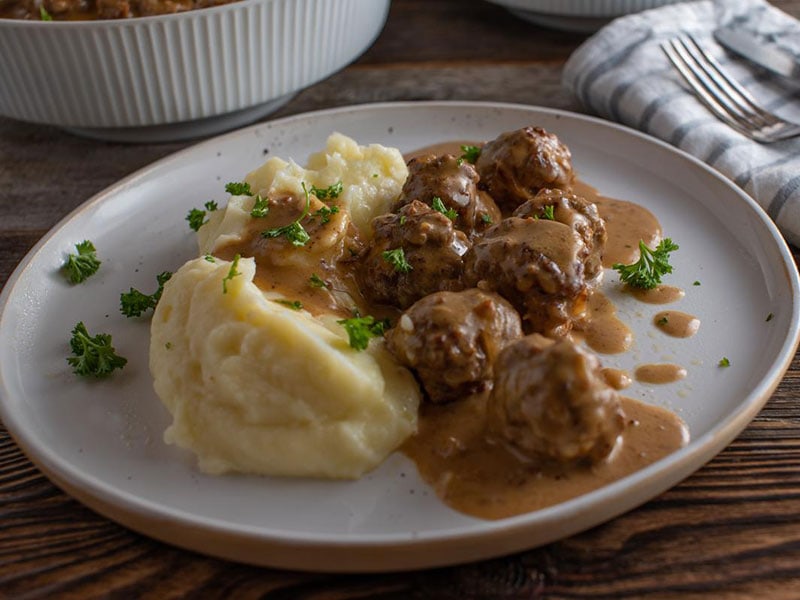
The Swedish version of meatballs contains finely ground meat (often a blend of pork and beef), breadcrumbs, onions, and spices, all mixed into round, bite-sized pieces. Swedes love to serve it warm with cream sauce and mashed potatoes, lingonberry sauce, or salads.
The combination offers a pleasing contrast between savory meat and tart berries. The origin of Köttbullar dates back centuries, allegedly brought back by King Charles XII of Sweden after his exile in the Ottoman Empire. However, this is a matter of debate.
26. Norway
Of Viking origin, Norwegian culinary scene is deeply rooted in its cold, rugged land and rich sea. Seafood is a cornerstone of local foods, especially fish like cod, salmon, and mackerel. Lamb, game, berries, and root vegetables also play important parts.
Preservation techniques like drying, salting, and smoking are common, indicating the need to store food for harsh winters. Smoked salmon is a Norwegian icon. In recent times, popular dishes from other parts of the world have become increasingly popular in Norway.
Fårikål (Lamb And Cabbage Stew)
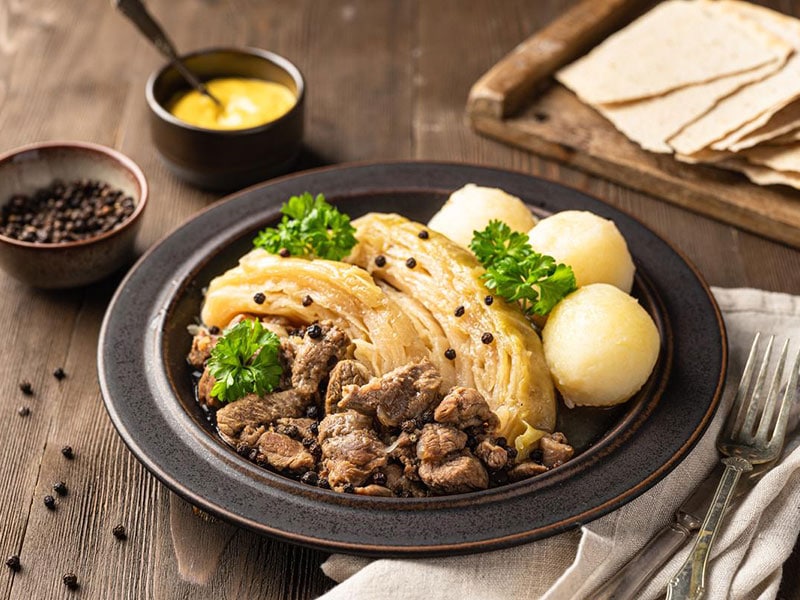
The national dish of Norway is a rustic blend of lamb and cabbage, seasoned simply with salt and whole black pepper. Traditionally, it’s served in autumn, marking the end of the sheep grazing season. That is also the time that lamb is its most tender and flavorful.
To enjoy Fårikål, you layer pieces of lamb, cabbage, and boiled potatoes or Flatbrød (unleavened bread) on your plate. Though a relatively new recipe dating back to the mid-19th century, Fårikål is a dish that Norwegians can’t live without.
27. Estonia
Influenced by Scandinavian, Baltic, and Central and Eastern European cuisine, foods in Estonia are a dance of flavors. They are derived from fresh ingredients, with a preference for rye, potatoes, pork, dairy products, and forest treasures like berries and mushrooms.
Seasons had and still have strong effects on how Estonians enjoy food. Fruits, vegetables, and meats are plentiful in spring and summer, while winter is the best time for preserved vegetables and cured meats.
Verivorst (Estonian Blood Sausages)
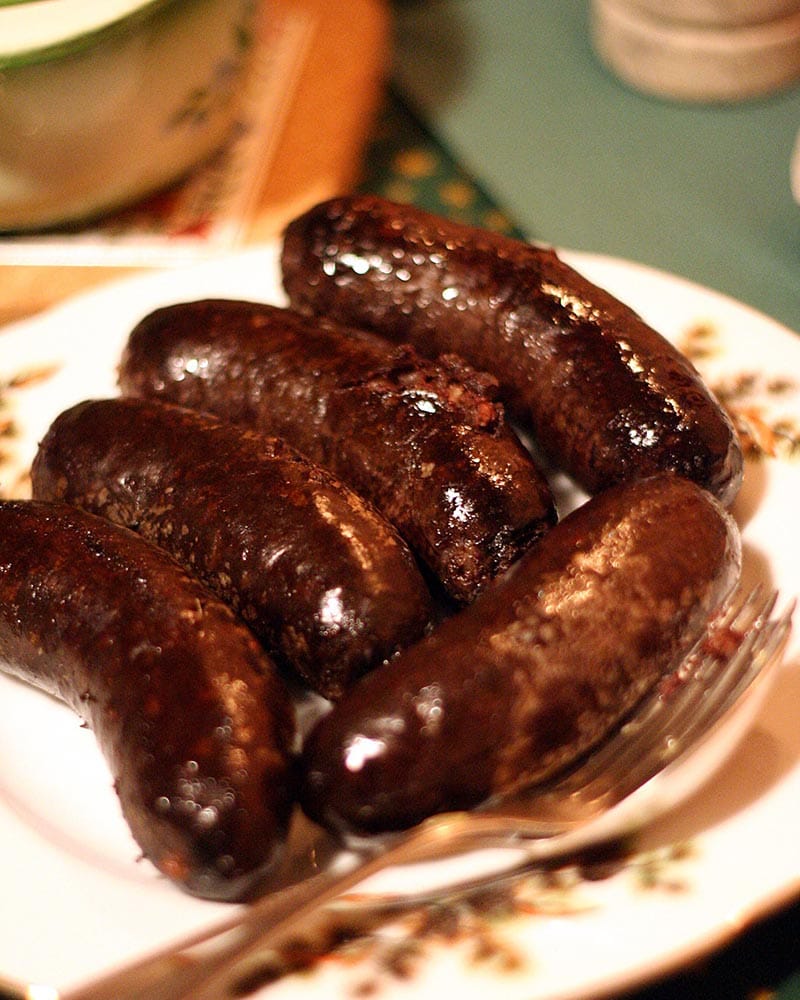
Verivorst is a staple of Estonian winter menus, particularly during the Christmas season. This black pudding gets its dark hue from pork blood mixed with barley and suet. A generous sprinkle of herbs and onions will complete the flavor profile.
Created as an efficient way to use all parts of an animal, Verivorst has risen to be an alluring Northern European delicacy. Slice it thinly and serve with lingonberry jam, sour cream, or sauerkraut so that the tartness will provide a counterpoint to the savory sausage.
28. Finland
If you enjoy authentic Finnish food, expect ingredients like milk, berries, potatoes, mushrooms, fish, and meats (like pork and reindeer). Methods like smoking and pickling are a nod to the long, cold winters and the need to store food.
During WWII, Karelian refugees traveled around Finland, bringing many delicacies from their homeland to Finland’s culinary repertoire.
Karjalanpiirakat (Karelian Pie)
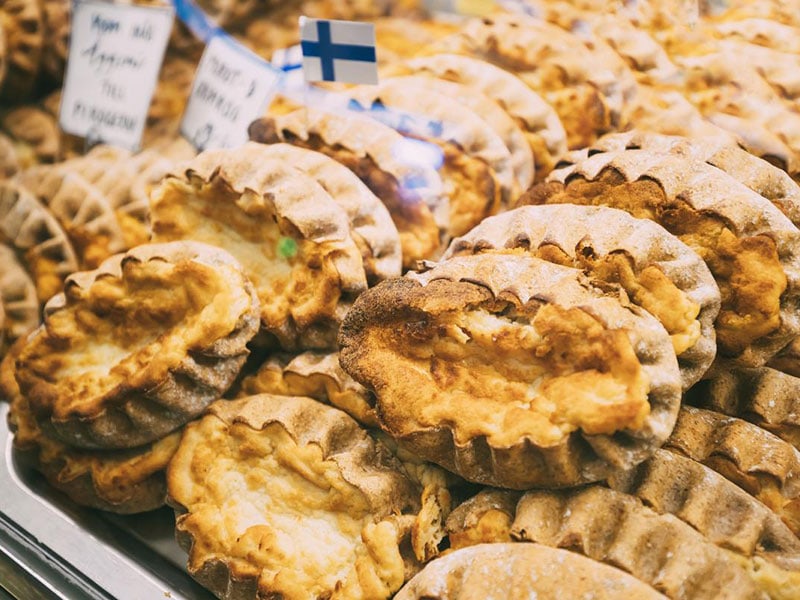
Hailing from Karelia, this humble pie is a culinary symbol of Finland. The baked pie sports a thin rye crust encasing a sweet filling of milky rice porridge and coated with a mixture of eggs and butter. Some versions include potatoes or carrots in the filling.
Though a little time-consuming to make, Karjalanpiirakat is perfect for breakfast or a mid-day meal. In addition, it has a long shelf life and isn’t affected by the long, cold winter. You can enjoy it on its own or with pickles, smoked meat, and a cup of coffee.
Latvia
Like other Baltic cuisines, Latvian popular foods are very hearty and low in spices. They are abundant with whole grains, potatoes, mushrooms, meats, and dairy products, particularly cheese.
Pork and fish are the main sources of proteins. Seasonal vegetables offer a wonderful break from the fatty fare.
Rudzu Maize (Rye Bread)
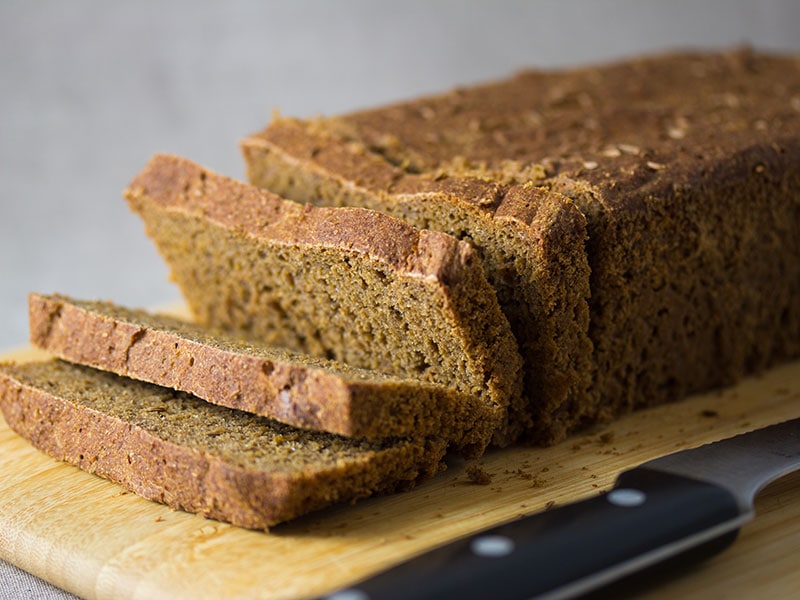
Rye bread has been the cornerstone of Latvian cuisine for millennia. This bread has a dark, dense, slightly sweet taste and a soft interior. Unlike its siblings, Rudzu Maize gets its unique flavor from a fermentation process involving a rye sourdough starter.
In terms of ingredients, this everyday staple can differ across Latvia, some with the addition of caraway seeds for a flavor twist. Traditional customs include not dropping it to the floor or turning it upside down since doing so will cause bad luck.
Lithuania
While German, Polish, and Russian have some influence on Lithuanian cooking, local foods in Lithuania have more in common with Baltic and Scandinavian traditions.
Simple and wholesome ingredients, like mushrooms, potatoes, berries, beets, seasonal greens, and dairy products, create the foundation of Lithuania foods. Meanwhile, pork, beef, chicken and freshwater fish keep Lithuanians strong and healthy.
Cepelinai (Potato Meat Dumplings)
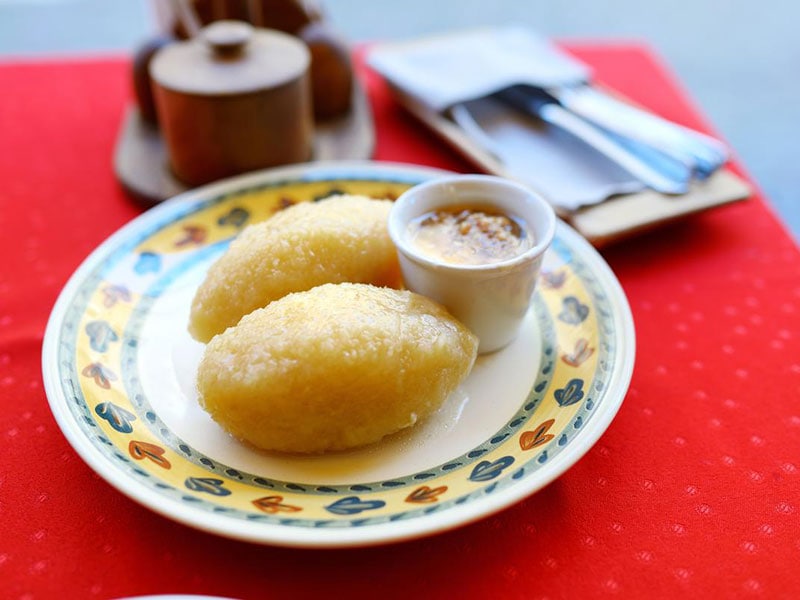
Cepelinai (meaning “Zeppelins” in Lithuanian) owe the name to their airship-like shape. Though they originated in the early 20th century and only became popular after WWI, these potato dumplings are now an iconic component of Lithuanian cuisine.
They are a combination of hearty potato casings and flavorful fillings of ground meat, dry curd cheese, and mushrooms. Some variations may include vegetable-based fillings, but all versions are typically topped with sour cream or a bacon and onion sauce.
Cepelinai often boasts a large size, hence the alternate name, Didžkukuliai (“big meatballs”).
31. Livonia
Livonian cuisine refers to the culinary tradition of Lavionia, a historical region now split between Latvia and Estonia. It depends strongly on seafood, especially food, along with rye, barley, potatoes, wild berries, and mushrooms.
Salted Herring
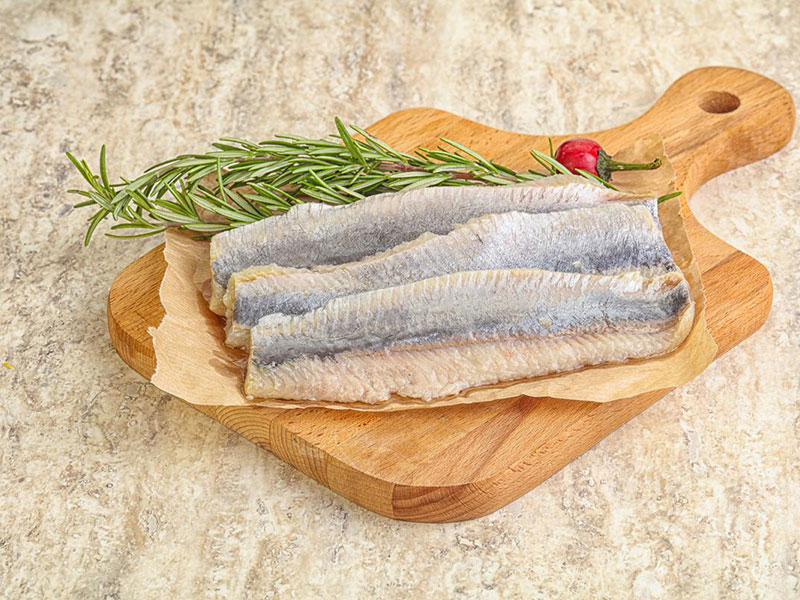
Livonian salted herrings are a delicacy from the Baltic coastal regions. They are a preserved fish dish with a rich, salty, and savory flavor accompanied by a firm yet tender texture. Some versions may include spices like peppercorns and bay leaves.
Served traditionally on Christmas Eve and Midsummer celebrations, it pairs well with rye bread and boiled potatoes.
32. Sami
Sami cuisine is centered on nature’s bounty in the Arctic Circle. Local specialties in Sami rely heavily on signature ingredients like reindeer, fish, berries (especially cloudberries), and milk. Cooking techniques involve smoking, drying, and boiling.
Bidos (Sami Reindeer Soup)
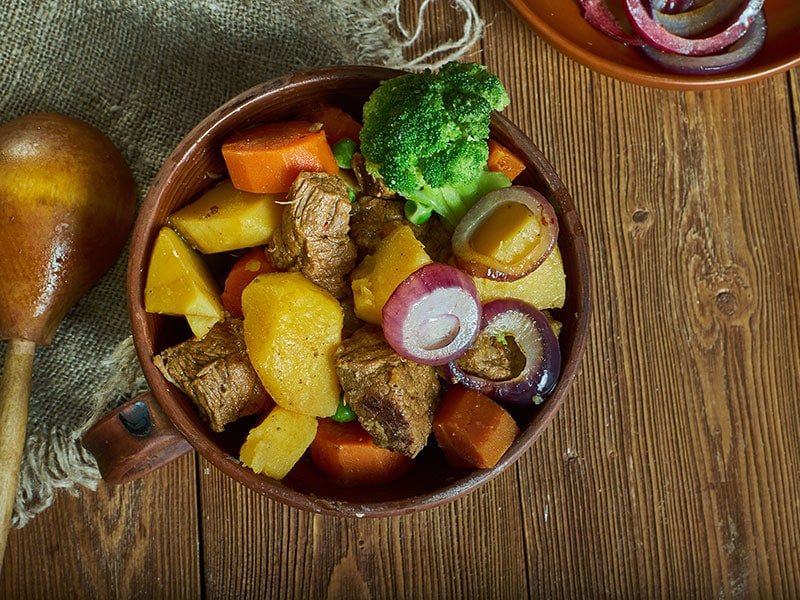
Bidos is a nourishing meat soup that bears the rich and gamey flavors of reindeer meat and, in some cases, hearts. It also contains vegetables like carrots, potatoes, and onions. While there is a little seasoning in Bidos, the exotic savoriness still leaves an unforgettable impression.
In Southern Europe
33. Greece
A descendant of the time-honored Byzantine cuisine and ancient Greek cooking traditions, modern Greek cuisine brims with fresh ingredients. Wheat, wine, and olive oil are among the most important ingredients, followed by fish, herbs, vegetables, dairy products, and various meats.
Greek cuisine’s influence extends to Italy and Turkey, from where it has also drawn inspiration. There are several notable regional cuisines in Greece, including Crete, Epirus, Macedonia, and the Ionian Islands.
Moussaka (Eggplant Casserole)
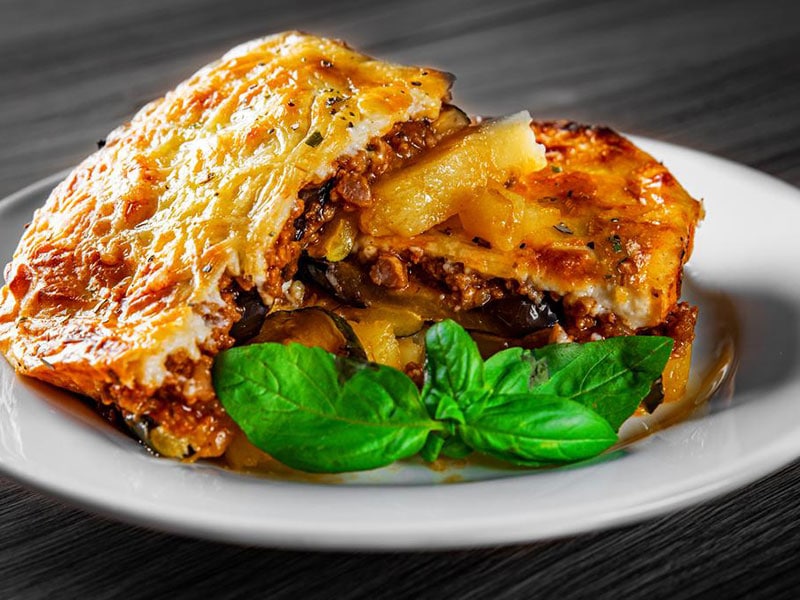
Moussaka is a layered dish similar to a casserole. It was created by a French-trained Greek chef in the 1920s. The main ingredients are layers of eggplant, potatoes, and minced meat (usually made from lamb) topped with a creamy béchamel sauce.
This combination yields a harmonious blend of savoriness and vegetal earthiness, contrasted by the creamy béchamel. The baked golden-brown crust looks like that of lasagna, but the flavor is more satisfying. Some variants may substitute eggplant with other vegetables like zucchini or potatoes.
34. Spain
Similar to other Mediterranean cuisines, signature Spanish foods include ingredients like olive oil, tomatoes, herbs, seafood, and certain meats. There is widespread use of grilling, roasting, and stewing. And everyone knows about the tapa culture, involving small plates of food shared among friends.
Spanish cuisine has been shaped by interactions with other cultures over the centuries, including Roman, Mediterranean, Arab, and New World influences.
There are many popular regional cuisines in the country, most hailing from autonomous communities: Andalusia, Asturia, Aragon, Castile and León, Valladolid, Valencian Community, Castilla–La Mancha, Basque, Cantabria, Canary Islands, the Balearic Islands, Catalonia, and Galicia.
Paella (Saffron-flavored Rice With Meat/Seafood And Vegetables)
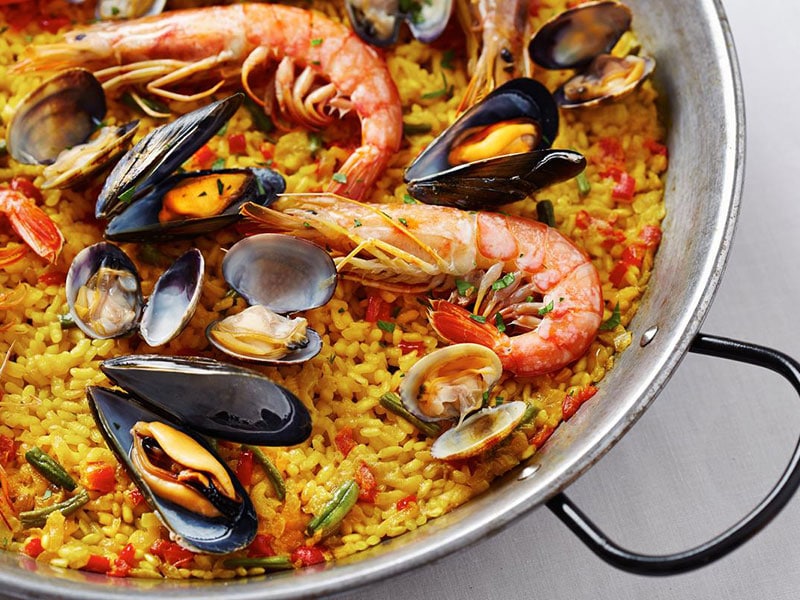
This flavorful one-pan rice dish comes from mid-19th century Valencia. It offers a delightful union of savory and smoky goodness. Countless regional adaptations are available, but the main ingredients always include rice, saffron, meat or seafood, beans, and vegetables (like tomatoes).
Let me tell you a fun fact: this Spanish delicacy was named after the pan it is cooked in, “la paella.”
Here’s another one: The caramelized rice at the bottom (socarrat) delivers an irresistible crunch. While Paella is a standalone meal, crusty bread, green salads, or buttered shrimp can accompany it.
35. Italy
Italian cuisine is one of the most celebrated in the world. Most popular dishes in Italy focus on the quality of the ingredients rather than the quantity or seasoning. Pasta fans probably know about the “al dente” cooking method, which leaves pasta or vegetables slightly firm to the bite.
Another characteristic is the use of seasonal ingredients. Olive oil, vegetables (like zucchini, tomatoes, bell peppers, etc.), and seafood are staples. But foodstuffs like cheese, cold cuts, pasta, pizzas, or sweet treats are also of high quality. Wines are a sought-after beverage.
There are many regional gastronomies spread over Italy. Notable names from the north to the south include Lombardy, Liguria, Mantua, Venice, Rome, Naples, Basilicata, Sardinia, Sicily, Abruzzo, and Apulia.
Ragù alla Bolognese (Italian Bolognese Sauce)
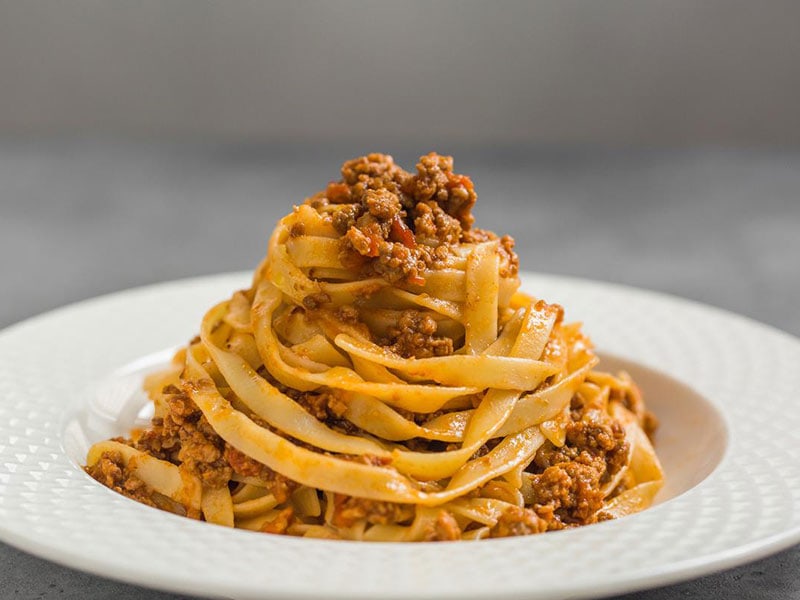
Ragu alla Bolognese has its roots in Bologna in the early 19th century. Known simply as Bolognese, this rich and hearty sauce results from slow cooking a mix of finely chopped beef, pork, carrots, celery, onions, tomatoes, and white wine to fuse the flavors.
It has a thick texture with a savory and sweet taste, plus a charming tang. Variants exist worldwide, but the official recipe is maintained by the Italian Academy of Cuisine. The sauce is traditionally served with tagliatelle or pappardelle (ribbon-like pasta), and not spaghetti.
36. Portugal
The flavorful Portuguese cuisine is deeply rooted in the country’s seafaring history, making seafood an important ingredient. Portugal has one of the highest fish consumption rates per capita in Europe. Other staples include olive oil, pork, legumes, rice, potatoes, bread, etc.
Due to Portugal’s historic role in the spice trade, herbs and spices (like saffron, paprika, cloves, or cumin) play an important part in local cuisine.
Besides influences from the Arabic and Mediterranean regions, Portuguese cuisine also bears traces of African and South American foods due to its past as a colonial empire.
Bacalhau (Salt Cod)
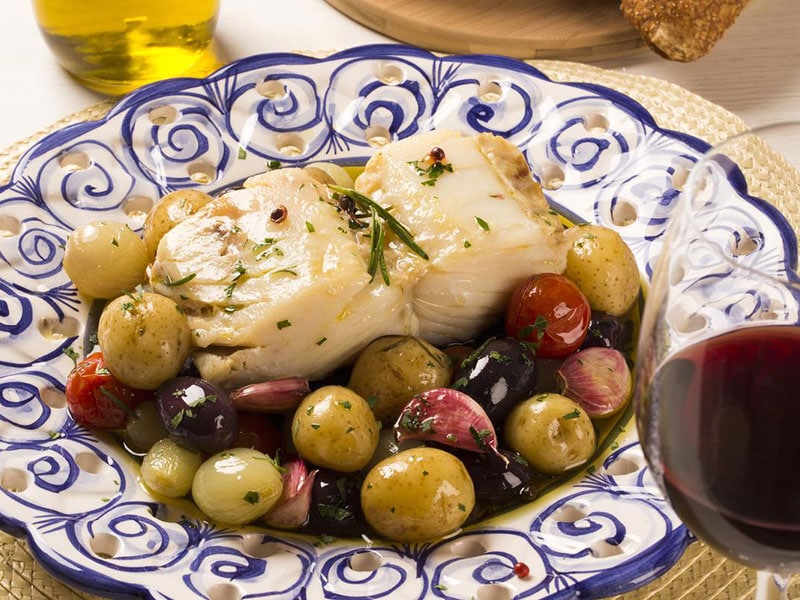
Bacalhau refers to salted, dried cod, a Portuguese staple dating back to the Age of Discoveries. Also known as “fiel amigo” (faithful friend), its flavor is rich and salty but still offers enough sweetness to please any taste buds.
Bacalhau can appear in countless recipes: some people claim that there are more than 1000 ways to prepare it. The most popular one is to cook Bacalhau with potatoes, onions, eggs, olive oil, and spices. This one is a fixture in holiday celebrations, especially Christmas.
37. Serbia
Serbian terrains are more favorable for animal husbandry than agriculture, hence the diversity of meat and dairy products in Serbian local cuisine. Cheese, cured meat, lamb, pork, eggs, savory pastries etc. appear in many meals. Cereals and legumes are other important foodstuffs.
Cooking techniques are diverse, yet roasting and grilling (known as rostilj) prevail. With a complex history deeply intertwined with its geography, Serbian cuisine mirrors Byzantine, Ottoman, and Central European influences.
Sarma (Stuffed Cabbage)
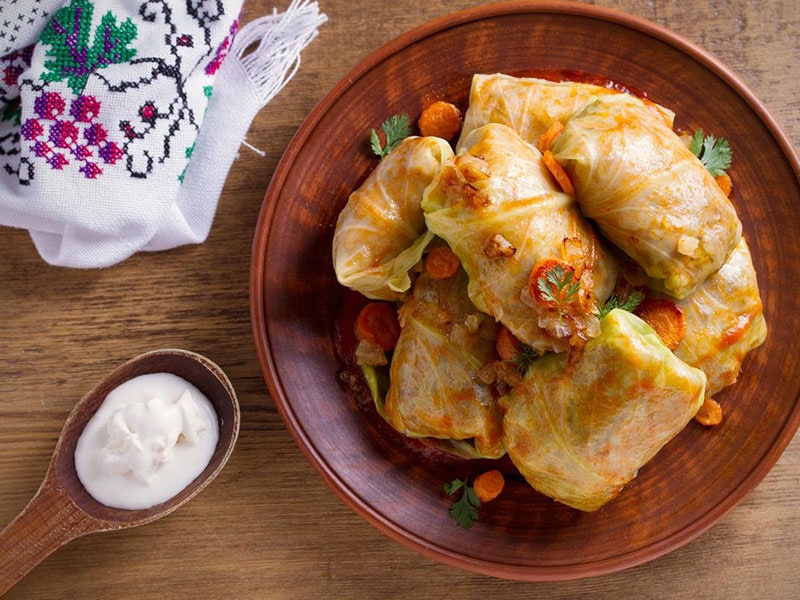
While Sarma can be prepared with other vegetable leaves elsewhere, the Serbian version usually consists of rolled cabbage leaves or even sauerkraut leaves in winter and grapevine leaves in summer. The filling is a mix of minced meat (pork or beef), rice, and spices.
Sarma offers a blend of savory and slightly sour flavors, enveloped within a tender texture. It holds a special place in Lent, Christmas, and Slava (a Serbian celebration of a family’s patron saint). There’s a saying that Sarma tastes better on the second or third day, which is true in my experience.
38. Croatia
Croatian cuisine can be divided into two zones: coastal and continental. The first region carries all the traces of Mediterranean cooking, with liberal use of olive oil, fresh seafood, and aromatic herbs.
Meanwhile, the interior relies on hearty staples like meats, dairy products, lard, and spices. It is the result of a mix of Central European, Turkish, and Slavic cooking traditions. Croatia has many popular dishes in both regions, like soups, pasta, cured meats, savory pastries, etc.
Peka, a unique baking method using a bell-shaped lid covered with embers, delivers mouthwatering roasts and one-pot meals.
Zagorski Štrukli (Croatian Cheese-filled Pastry)
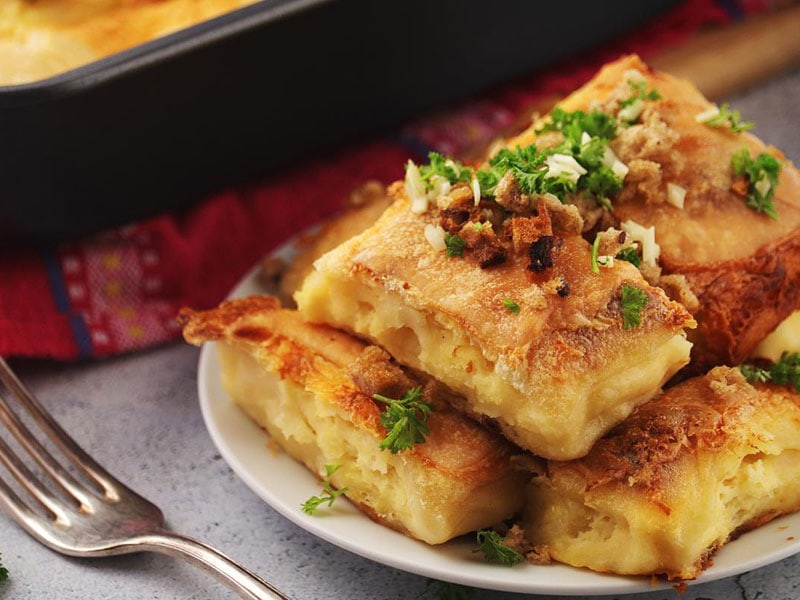
Typically served as an appetizer or dessert, Zagorski Štrukli (or Struklji) is a centuries-old pastry dish coming from northern Croatia. Its name literally refers to a rolled dough. In 2007, Croatia’s Ministry of Culture added it to the list of intangible cultural heritage in the country.
This baked or boiled delicacy boasts a creamy, tangy flavor and contrasting textures, as the soft, luscious filling of cottage cheese, eggs, and cream hides behind a crisp crust. Variants may include different types of cheese or spices.
39. Cyprus
Blending Greek and Turkish cooking traditions, you’ll get the Cypriot culinary scene. Signature ingredients include olive oil, fresh vegetables, fruits, legumes, bulgur, meats, yogurt, and halloumi (a Cypriot semi-hard, unripened cheese). Cypriot cooking employs methods such as grilling, baking, and slow cooking.
Fasolada (White Bean Soup)
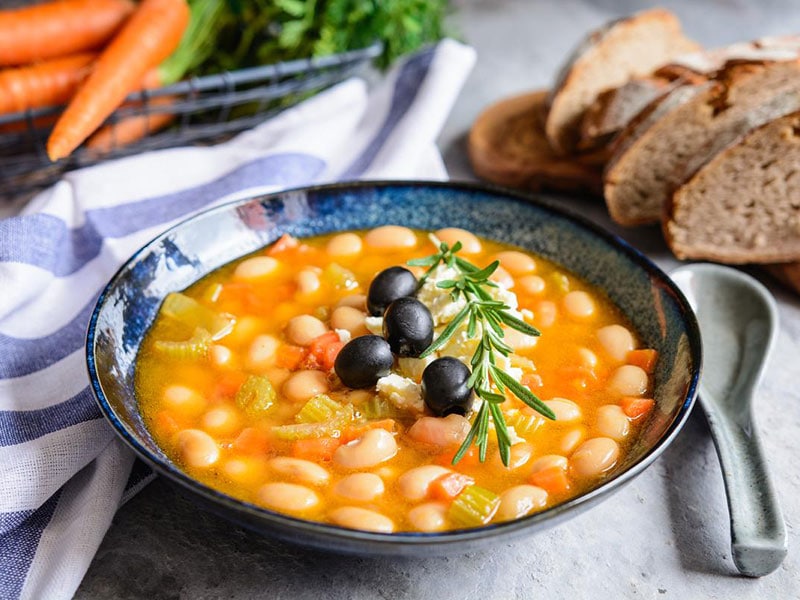
Fasolada (pronounced fah-so-lah-thah) is a famous soup in both Greece and Cyprus. It offers a hearty and comforting flavor, coming from subtly spiced white beans, olive oil, herbs, and vegetables (like carrots, tomatoes, and onions).
Fasolada is inherently vegan, but some versions may incorporate meat. It has captivated countless people since ancient Greece, proving how delicious this simple fare is. You can savor it alone or with crusty bread.
40. Albania
Albanian cuisine is a little-known treasure of Mediterranean cuisine. Due to the relations between Albania and Kosovo, Albanian iconic foods have a pronounced effect on Kosovan cuisine.
It is marked by its simplicity and freshness, with olive oil, fresh fruits, vegetables, and dairy products as signature ingredients. Coastal areas favor seafood and vegetables, while cheese and meat dishes are more popular inland.
Tavë Kosi (Baked Lamb With Rice)
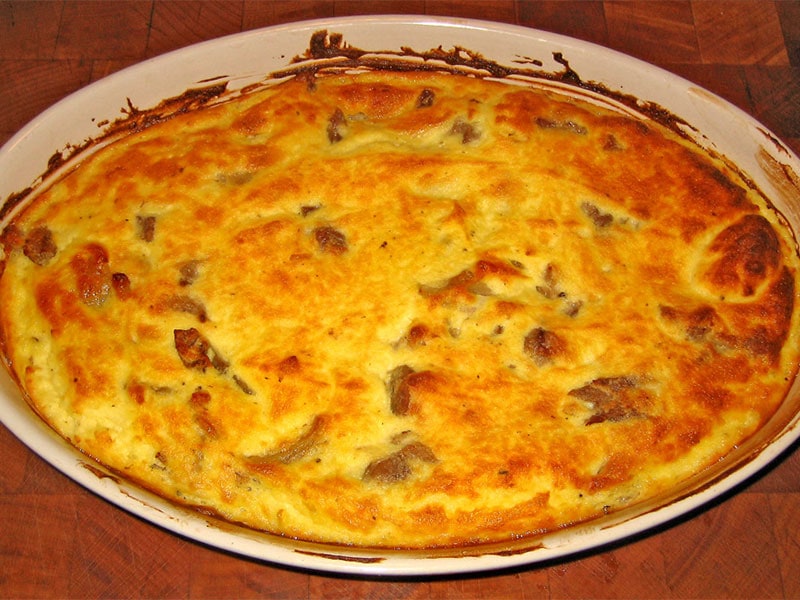
Tavë Kosi is a savory dish from the city of Elbasan, Albania. It revolves around a melange of lamb and rice baked under a yogurt-egg topping that browns beautifully in the oven. Sink your teeth in its creamy texture, and its tangy, hearty flavor and stimulating aroma won’t let you down.
Some variants may substitute lamb with chicken or beef, the yogurt-based topping remains unchanged. Serving it with a side of fresh salad or pickled vegetables is a local practice.
41. Aromania
Aromanian cuisine belongs to Aromanians, a small Balkan ethnic group with many similarities to Romanians, but with more Greek than Slavic influences. Cheese, cured meat, vegetables, and pastries are important facets of Aromanian foods.
Aromanian Butterbur
Butterbur (Petasites hybridus) is an edible wild plant native to northern Asia and many parts of Europe. Wet places with fertile soil, like by a river or stream, are very suitable for the plant. It flowers in spring before producing leaves with a vanilla-like scent and a bitter flavor.
Aromanians often harvest the leaves to cook with water and wheat flour. They believe that this dish is very good for breastfeeding women.
42. Bosnia and Herzegovina
Since Muslims account for more than half the population of Bosnia and Herzegovina, Halal guidelines play a role in local cuisine. Another factor is the influences from neighboring regions, such as the Mediterranean, Central Europe, and Ottoman gastronomies.
In terms of meats, lamb, and beef are favorite proteins for dishes in Bosnia and Herzegovina. Dairy products, vegetables, mushrooms, and legumes are also a crucial part of the diet. Spices are significant in terms of diversity, but locals usually use them in moderation.
Bosanski Lonac (Bosnian Stew)
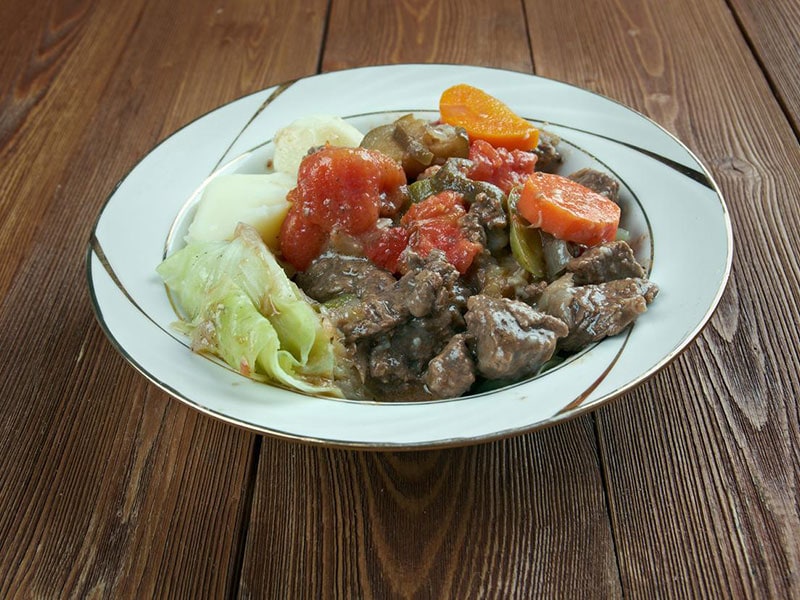
Bosanski Lonac (literally “Bosnian pot”) is just as diverse as the ethnic makeup of the country. Primarily, it includes beef or lamb chunks and a spectrum of local vegetables. Typical options include cabbage, carrots, tomatoes, potatoes, garlic, white wine, etc.
No two Bosanski Lonac dishes are identical, with variations spanning across households and regions. This savory and hearty stew takes many hours of simmering to complete, but its combined richness of various flavors is simply divine.
43. Gibraltar
The multi-faceted cuisine of Gibraltar mirrors its unique geopolitical location. British, Spanish, Italian, and Maltese influences combine wonderfully with local elements to create a must-try cuisine. Seafood, fruits, vegetables, pasta, and olive oil are ubiquitous in this British territory.
Calentita (Chickpea Bread)

If you think Calentita looks like a pizza base without toppings, you’re not alone. It is a delectable chickpea flour bread whose origins trace back to Genoan immigrants in the 19th century. Its ingredient list is quite short, requiring nothing more than chickpea flour, water, salt, and olive oil.
This gluten-free treat provides a firm exterior and a subtly nutty flavor. However, Calentita can be fairly bland, so it is always served hot and topped with a lot of salt and pepper.
44. Macedonia
You can see many Mediterranean and Balkan elements in the interesting Macedonian cuisine. The country’s favorable climate for farming led to an abundance of fresh produce and contributed to diverse food preparations. Bread, vegetables, legumes, dairy products, and meats are popular staples.
Tavče Gravče (Macedonian Baked Beans)
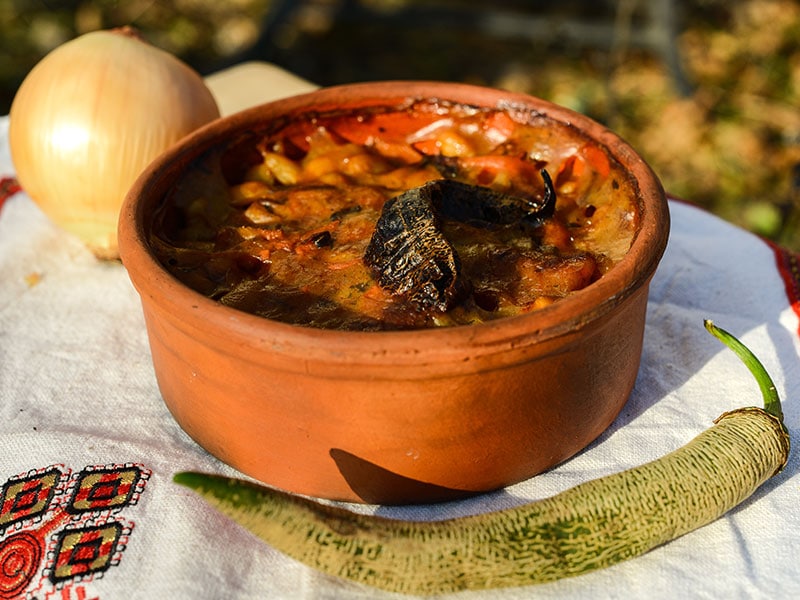
Tavče Gravče, (literally “beans in a pan”) arose from the need for hearty food to endure cold winters. Its rich taste and creamy texture are derived from Tetovac (local large, flat white beans), spices, and vegetables (like bell peppers and onions).
Locals often prepare and serve Tavče Gravče in an unglazed clay pot. It is a vegan-friendly dish and can accompany anything. Standard sides are bread and salads.
45. Malta
Historically, Malta wasn’t in a position to produce its own foodstuffs (besides seafood), so it had to import many things to sustain the population. That led to a flexible Maltese cuisine that is open to change.
While predominantly Mediterranean, it shows traces of English, Italian, and Middle Eastern cuisines.
Stuffat Tal-Fenek (Maltese Rabbit Stew)
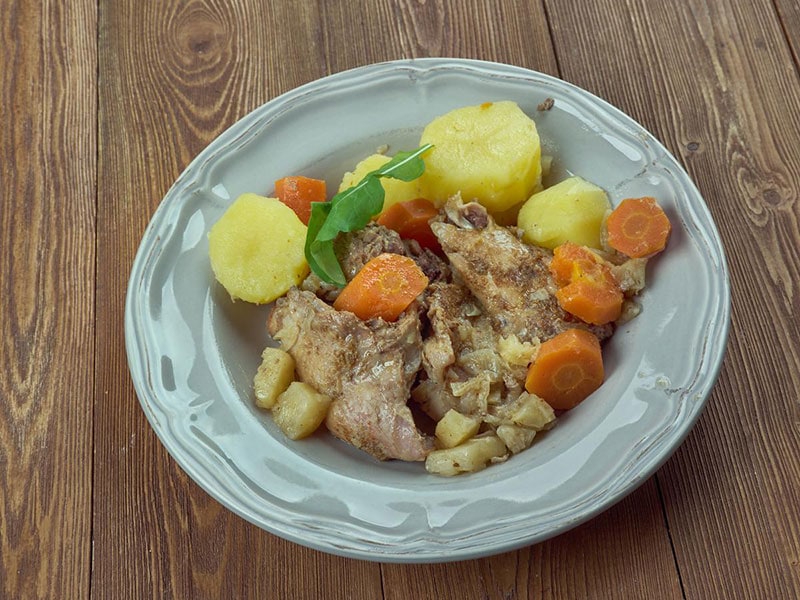
This exotic Southern European dish is known for its deep, hearty flavors, enhanced by red wine, garlic, carrots, and herbs. The flavorful and fall-off-the-bone meat, soaked in a savory sauce, pairs perfectly with Maltese bread or pasta.
Stuffat Tal-Fenek was so popular that rabbit hunting was banned during the Knights of Malta‘s rule to protect the animal. Today, it is a celebratory food and is often served at large family feasts or festivals, especially Fenkata, a traditional Maltese communal meal with rabbit-based dishes.
46. Montenegro
There is a significant variation in the Montenegrin culinary scene, from rugged mountains to tranquil Adriatic shores. Seafood plays a substantial role in coastal dishes, while inland cuisine is rich in dairy products, meats, and fresh produce. Local food culture mirrors the cuisines of neighboring Italy, Greece, and Turkey.
Njeguška Pršuta (Dry-cured Ham)
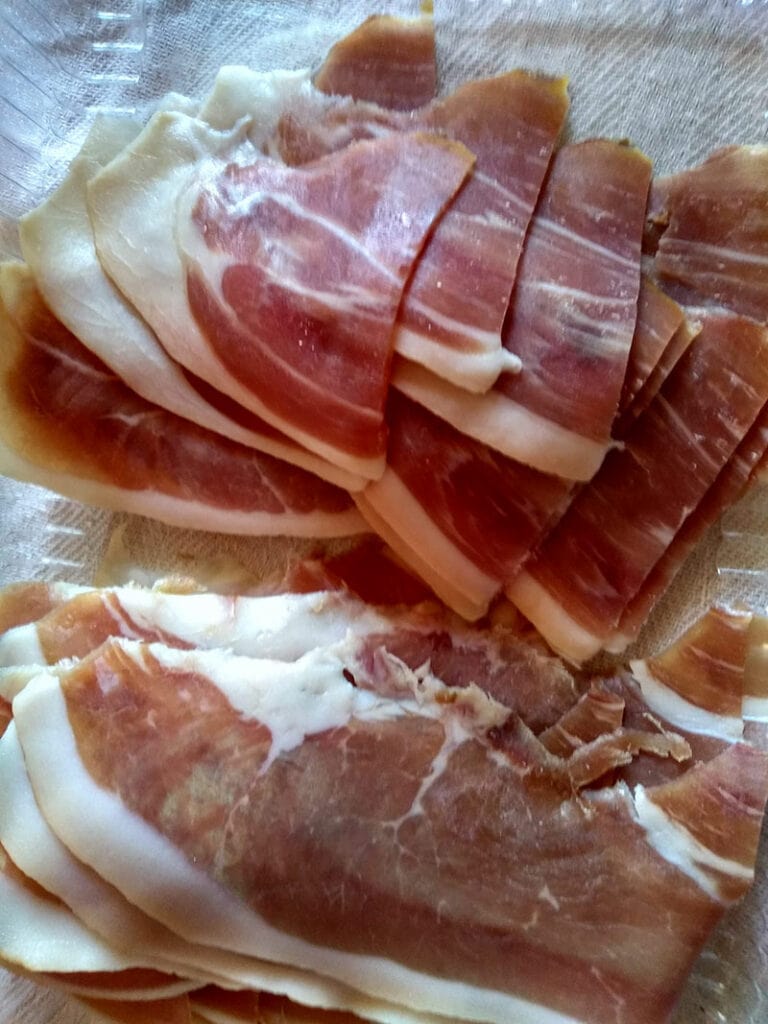
Njeguški pršut is a beloved Montenegrin product and a proud heritage from the Njeguši village. This dry-cured ham’s flavor is uniquely salty and smoky, which complements its supple, firm texture.
Variations may come in the curing period and conditions, yet it always comprises the same principal ingredient: quality pork salted with sea salt and dried in the mountain air for months. It can pair with Njeguški Sir (full-fat hard cheese), bread, and salads.
47. San Marino
Located within Italy, Sammarinese cuisine is similar to that of Italy. Its gastronomy uses ingredients primarily grown on the hillsides, such as corn, wheat, grapes, and olives. Pasta, cheese, wine, and meats are popular staples.
Torta Tre Monti (Wafer With Hazelnut Cream)
As the most famous Sammarinese dessert, Torta Tre Monti is a symbol of the nation’s pride. This layered wafer cake was created in 1942, inspired by the Three Towers of San Marino.
It consists of layers of wafers interspersed with chocolate and hazelnut cream, providing a play of crunch and smooth richness. The cake is covered in chocolate fondant for extra delight. Pair it with a cup of coffee or sweet wine, and the pleasure is all yours.
48. Sephardic Jewish
The long-lasting Sephardic Jewish cuisine originated in the Iberian Peninsula. It absorbed elements from Mediterranean, Middle Eastern, and North African cooking traditions. Olive oil, fresh vegetables, legumes, rice, and an abundance of spices (like cumin and cinnamon) mark this gastronomy.
As a result, Sephardic foods are often lighter than their Ashkenazi counterparts. Still, they incorporate plenty of seafood, lamb, and poultry.
Sambusak (Turnover Pastries)
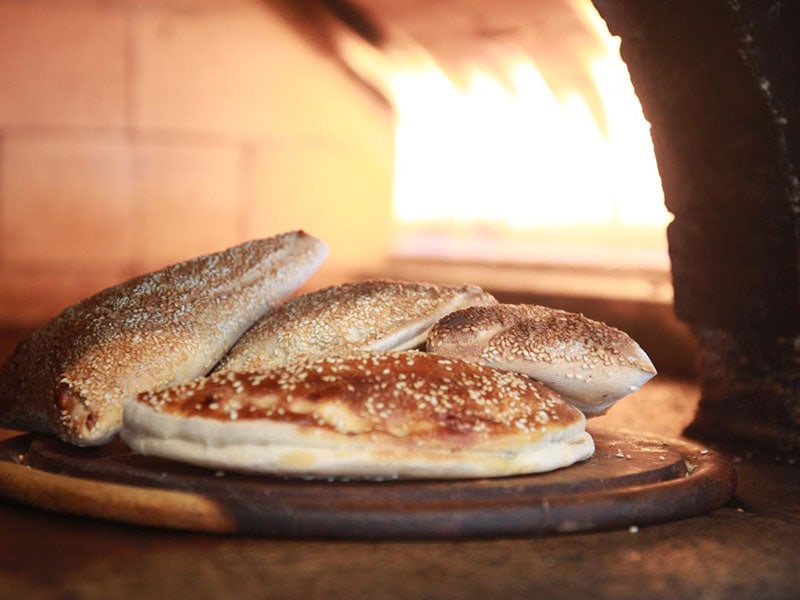
Sambusak is a savory pastry of Middle Eastern origin. It is also known as Sambousek or Sanbusaj. There are many versions throughout the world, with the Sephardic variation as one of the most famous. The firm dough encases flavorful fillings of ground meat, cheese, or chickpeas.
This half-moon-shaped delight is a signature dish during Purim, a festive Jewish holiday. It’s served alongside other Purim foods like mint tea and Hamantaschen (triangular-shaped cookies).
49. Turkey
The East-meets-West geographical location makes a uniquely rich and diverse cuisine in Turkey. Turkish foods are strongly Ottoman and Middle Eastern, but they are also very Mediterranean. Turkish influence can be felt in faraway regions, such as Central Europe and Eastern Europe.
Key ingredients include lamb, bread, rice, vegetables, yogurt, and spices, leading to dishes that balance earthiness, savoriness, and sourness. Islamic practice impacts the choice of halal ingredients and the structure of meals, especially during Ramadan.
Doner Kebab (Sandwiches Stuffed With Kebab Meat Shavings)
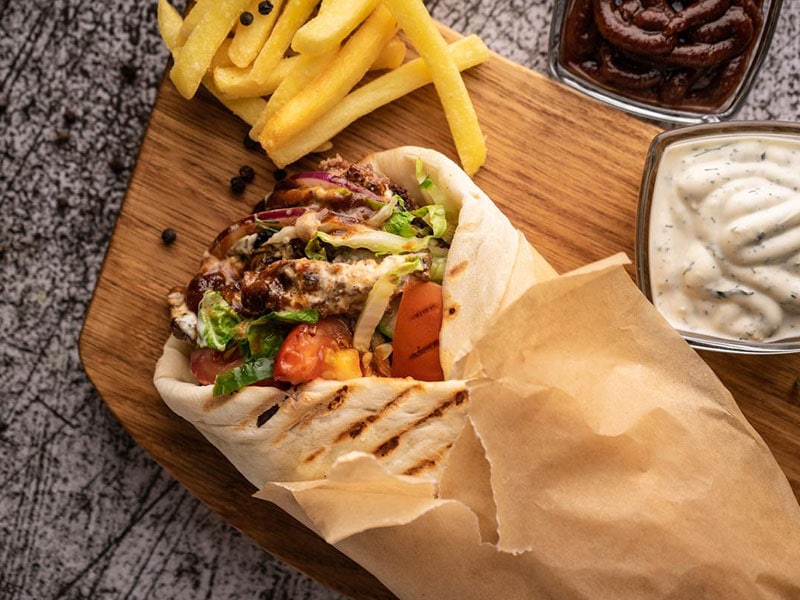
Originating from the 19th-century Ottoman Empire, this meaty marvel centers around vertically spit-roasted meat, usually lamb, beef, or chicken. After absorbing an aromatic blend of spices and grilling to perfection, the succulent meat is thinly sliced and stuffed into pita bread.
It is a much-loved street food that is often served with fresh veggies and tangy yogurt-based or spicy sauces. Shawarmas or Greek gyros are different versions of Doner Kebab. A quick fact: It was introduced to Germany post-WWII and has now become an integral part of German culture!
In Western Europe
50. United Kingdom
Signature ingredients in the classic UK cuisine include root vegetables, peas, lamb, beef, cheese, and seafood. Roasting, baking, and frying are common cooking methods. The British love for tea is legendary, and they have afternoon tea, a light meal with small sandwiches, scones, and tea.
Spices and cooking techniques borrowed from former colonies (like India) have greatly enriched British cuisine. Similarly, religious practices have shaped meal patterns, evident in the tradition of Sunday roast, a communal meal originally consumed after church.
There are many regional cuisines in the UK, namely Cornish, Devonian, Dorset, Welsh, Scottish, Northern Irish, and Channel Islands cuisines.
Roast Beef With Yorkshire Pudding
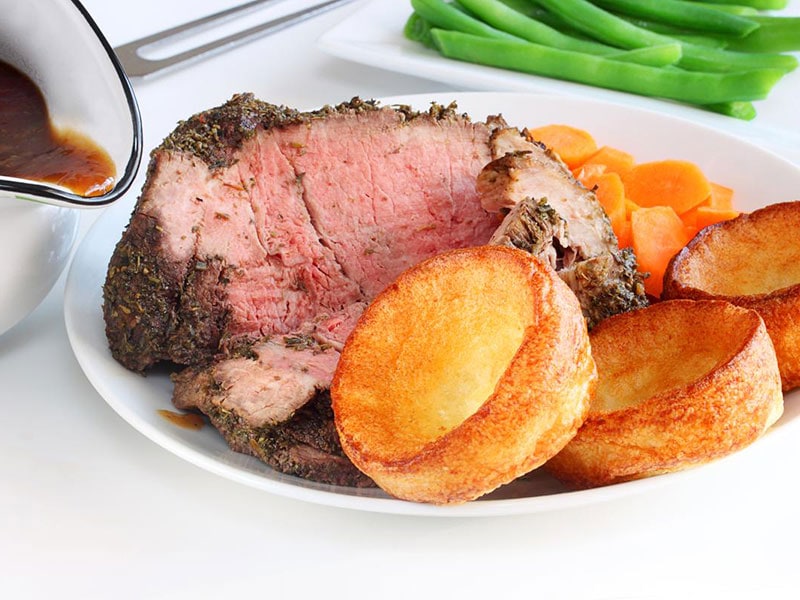
Roast beef with Yorkshire puddings is so important to Sunday roast that the two terms are almost synonymous with each other. is a celebrated dish. First recorded in the 18th century, this classic British dish comprises roasted beef and savory, fluffy pastry Yorkshire puddings.
The latter is made from a baked batter of flour, eggs, milk or water, and beef drippings. It provides a light and crisp contrast to the rich and juicy roast beef. Traditional side dishes are roasted potatoes, gravy, peas, and vegetables (like cabbage or broccoli).
51. France
The rich French cuisine dates back to the Middle Ages. It was subject to influences from neighboring Italy, Germany, and Spain before developing its identity in the 17th century. Today, French gastronomy is among the driving forces behind Western cooking traditions.
It is known for its focus on fresh, seasonal, and high-quality ingredients, as well as stunning food presentation and well-balanced meals, with its clever use of creams, aromatic herbs, wines, and cheese. In 2010, French gastronomy was recognized by UNESCO as an intangible cultural heritage. [3]
A highlight of French cuisine is haute cuisine, which can be divided into cuisine classique and nouvelle cuisine. Popular culinary traditions by region include Corsican cuisine and Lyonnaise cuisine.
Pot-Au-Feu (French Beef Stew)
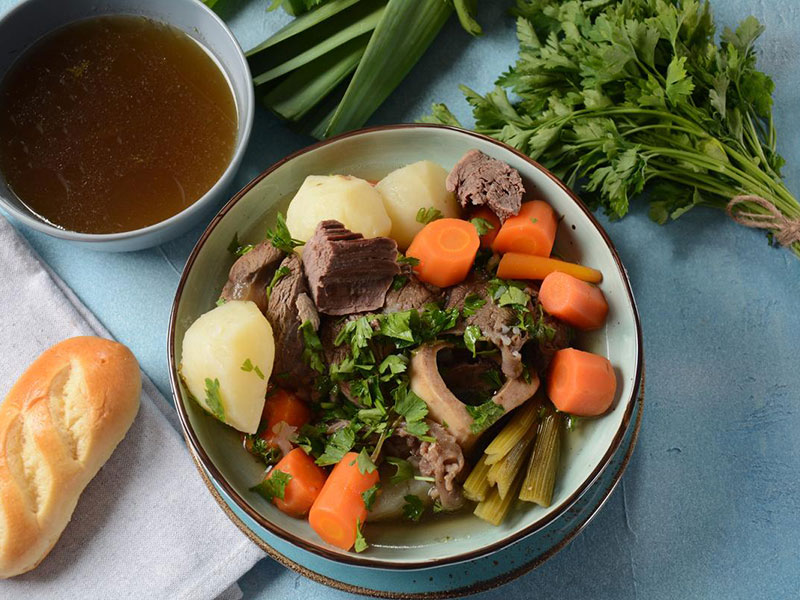
Pot-au-Feu (“pot on the fire”) is a quintessential French comfort food. Traditionally, it includes beef (pork and chicken are possible substitutes), vegetables (like carrots and leeks), and spices. They go through a slow cooking process to create a rich and flavorful broth and succulent meat and vegetables.
This dish epitomizes the values of French cuisine: quality ingredients, meticulous preparation, and a shared meal. It will be ten times as good if you pair it with Cornichons (tiny French cucumber pickles), Dijon mustard, horseradish, or sour cream.
52. Belgium
Some people say Belgian famous dishes possess the heartiness of German fare and the sophistication of French food, with touches of Dutch cuisine. They have a strong emphasis on local, seasonal ingredients.
From its temperate coastal climate to fertile inland areas, Belgium sources signature ingredients like endive, leeks, potatoes, beef, dairy products, and seafood. A unique element is the use of beer in various Belgian recipes. In addition, Belgian chocolate is among the best in the world.
Moules Frites (Mussels And French Fries)
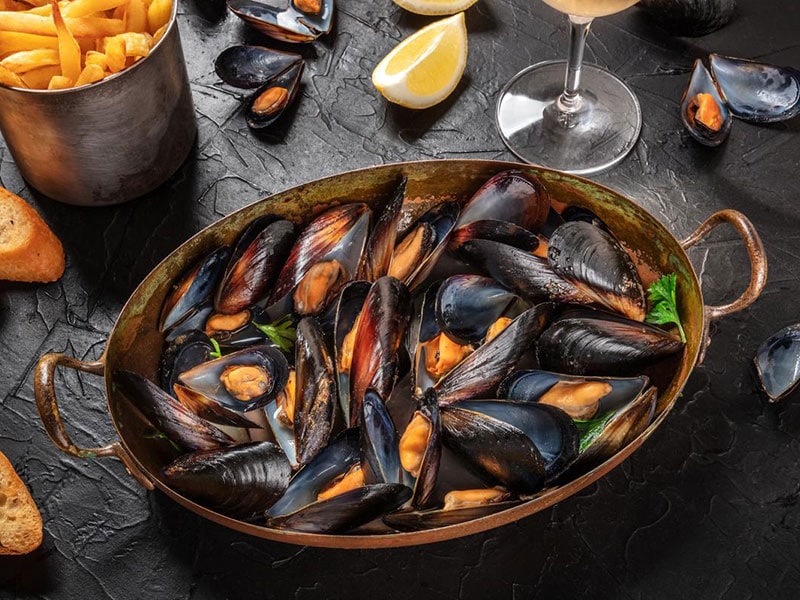
No one calls French fries by that name in Belgium: it’s Belgian fries, and locals pride themselves on producing the world’s best double-fried fries. One of the most popular ways to enjoy this dish is by pairing them with mussels, a combo that dominates the Belgian food scene.
The dish comprises mussels cooked in a flavorful, herb-infused broth and served with crispy fries and a savory sauce. Moules-Frites is both a common fast food and a menu item in upscale restaurants. It is a ubiquitous offering in winter when mussels are in season.
53. Scotland
The Scottish culinary art thrives on simplicity and the bounty of its land and sea, though borrowings from European and British Isles cuisines have also broadened the Scottish palate over time.
Lamb, beef, cereals, root vegetables, fruits, dairy products, and fresh seafood are the keystones. Preparations emphasize authenticity, with methods like smoking, baking, and stewing.
Haggis (Scottish Savory Pudding)
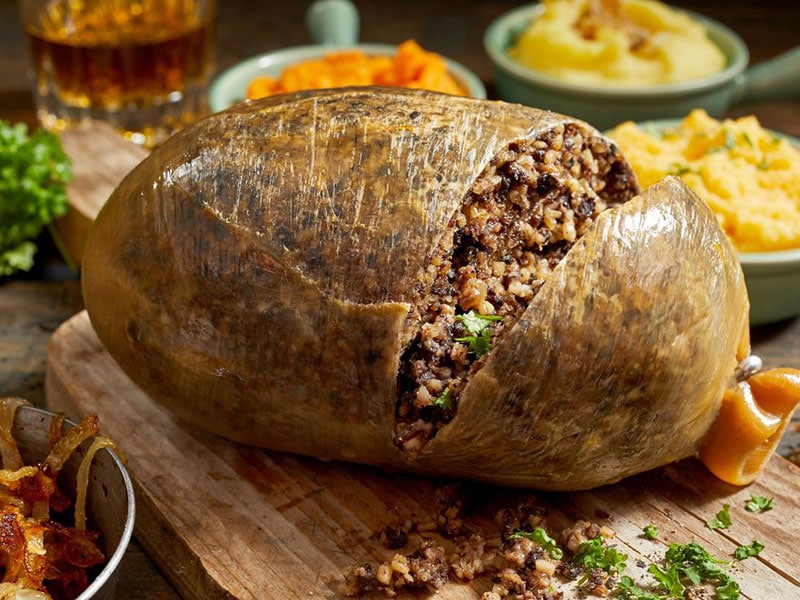
Scotland’s national dish boasts a distinctive taste that embraces meatiness, spiciness, and nuttiness all at once. That feature comes from the use of many interesting ingredients: sheep’s heart, liver, lungs, onions, oatmeal, suet, and spices, plus a sheep’s stomach for the casing.
Vegetarian versions replace meat with legumes and vegetables. Haggis is a fixture at the Burns Supper, an annual celebration of poet Robert Burns, where it’s served with “neeps” (turnips) and “tatties” (potatoes). Despite the myth, they aren’t made from wild haggis, which are fictional creatures.
54. Ireland
Irish cuisine emphasizes ingredients like grains, seafood, root vegetables, dairy products, and meats, especially lamb and pork. The ubiquitous potato, introduced in the 16th century, underpins many traditional dishes in Ireland.
Historical circumstances, like the Great Famine, have left indelible marks on the cuisine, reinforcing simplicity, thrift, and comfort. The late 20th century witnessed the emergence of a new Irish cuisine based on traditional ingredients.
Stobhach Gaelach (Irish Stew)
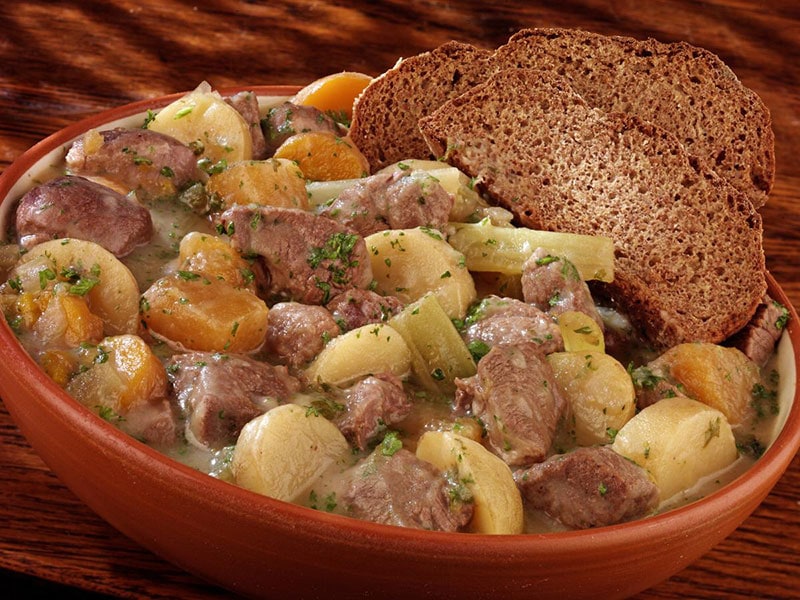
Irish stew emerged in Ireland in the early 19th century as an economical dish for families to utilize their readily available ingredients: potatoes, onions, carrots (optional), and mutton. It is simple yet full of flavors, as the juicy mutton mixes with the earthiness of root vegetables in the rich broth.
Many variants have since sprouted, replacing mutton with lamb or beef and introducing more vegetables. But the original recipe is still the most prevalent one. It often accompanies fresh Irish soda bread, its thick slices perfect for mopping up the delicious broth.
55. Netherlands
Dutch foods are rich, fulfilling, and simple. Potatoes, bread, cheese, fish, and vegetables are central to meals. The Dutch tend to maintain a modest and frugal approach to eating, where meals are often straightforward and heavy on fat and carbs.
While traditional Dutch cuisine is not so flavorful, new cooking trends coming from globalization and the kingdom’s former colonies have significantly improved it.
Stamppot (Mashed Potatoes Pot)
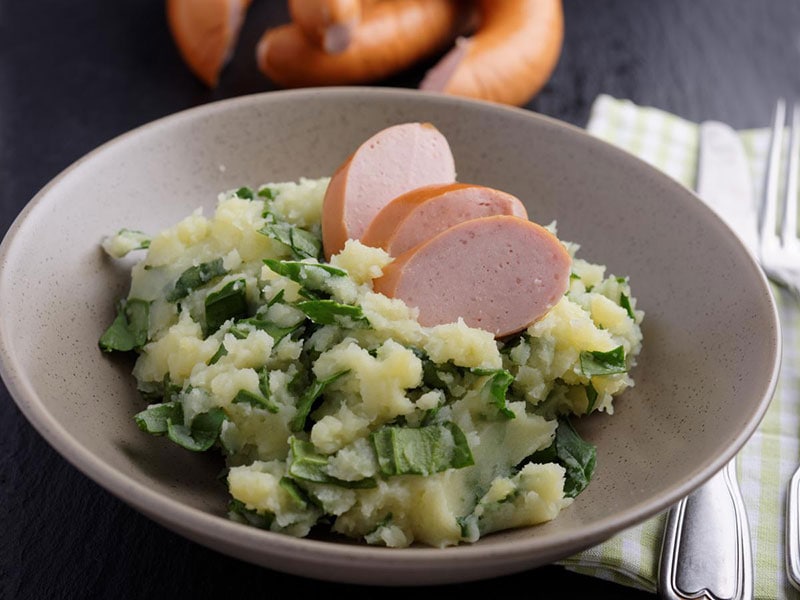
A favorite Dutch staple in winter, Stamppot (literally “mash pot”) is a hearty blend of mashed potatoes and vegetables (such as spinach, kale, carrots, or turnip greens). A side or topping of sliced Rookworst (Dutch smoked sausage) is the perfect touch.
This finger-licking Western European dish can be traced back to centuries ago and embodies the no-nonsense, practical aspect of Dutch culture. The dish is very nutritious and can feed many people at once.
56. Luxembourg
Many classic dishes in Luxembourg cuisine owe to the cooking traditions of Germany, France, and Belgium. Potatoes, white asparagus, broad beans, and various vegetables are staple ingredients. Freshwater fish from the Moselle River and game from the Ardennes forests grace dinner tables, too.
Judd Mat Gaardebounen (Smoked Pork Collar With Broad Beans)
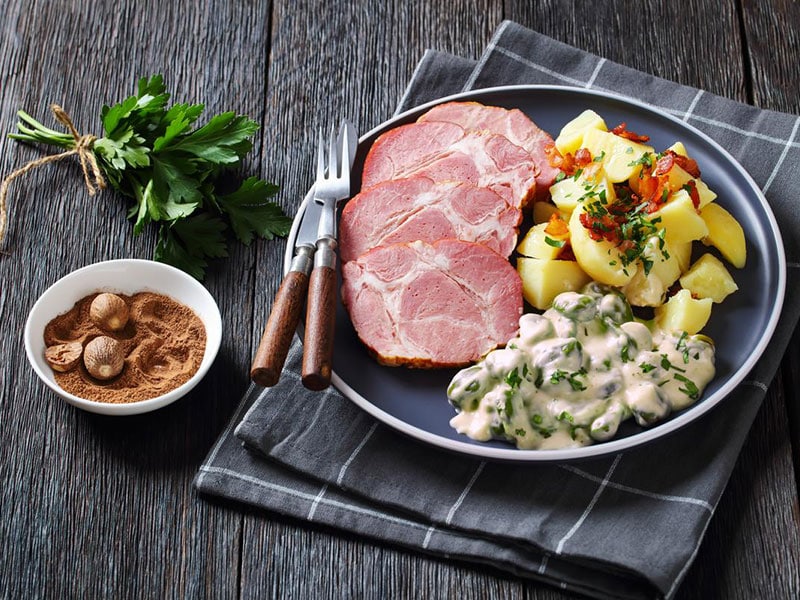
Many locals refer to this easily recognizable Luxembourg dish as simply “Judd.” The dish is prepared by cooking the pork collar in water with herbs and chopped vegetables until tender before serving it with blanched broad beans and a thick sauce based on Moselle wine and roux.
The result is a delicacy overflowing with its smoky, savory flavors. Since the village of Gostingen produces the best broad beans in Luxembourg, it is often linked to Judd. As broad beans are at their best in early summer, this is the best time to try this dish with mashed or fried potatoes.
57. Mennonites
The Mennonites are an Anabaptist Christian denomination that appeared in the 16th century. Their cuisine reflects their Swiss and German roots and their frugal, agricultural lifestyle. Mennonite foods are simple yet heavy on calories.
Key ingredients include garden-grown vegetables, grains, meat, eggs, and dairy products from their own farms. Preservation methods, like canning and pickling, are widely practiced.
Komst Borscht (Cabbage Soup)
Unlike the Russian or Ukrainian Borscht, this version embraces the humble cabbage as its star. Created for cold European winters, the soup combines ingredients like cabbage, potatoes, tomatoes, carrots, and herbs to create a satisfying meal. Meats are optional.
No fixed recipe exists; variations reflect local influences and personal tastes. The dish is often served with a side of crusty bread. Mennonites and Jews brought this Borscht variation to North American in the 19th century.
58. Monaco
Part of the Mediterranean cuisine, Monaco tasty specialties are a tantalizing dance of Italian and French influences. It embraces fresh seafood, sun-raised vegetables, olive oil, and aromatic herbs. As most Monaco’s residents are rich people or even millionaires, its high-class dining scene is extremely developed.
Barbajuan (Stuffed Fritters)
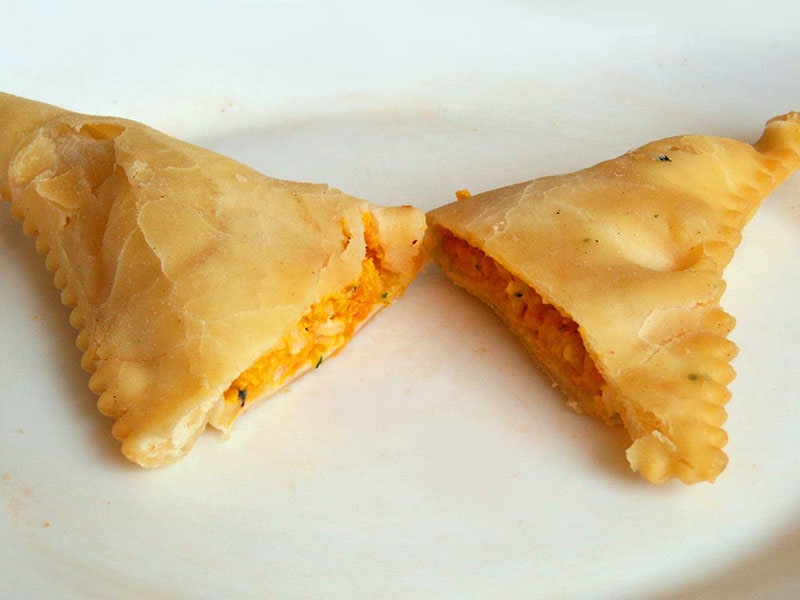
Barbajuan is a crescent-shaped stuffed pastry from Monaco. Its name translates to “Uncle John” in English, allegedly named after its creator. This appetizer is appreciated for its delicate crunch, followed by a flavorful filling, which is a mix of spinach, Swiss chard, ricotta, and onions.
As an hors d’oeuvre, Barbajuan often starts off meals, setting the tone for the Mediterranean-inspired dishes to follow. It is very popular on Monaco’s national day.
Occitania
Originating from the Occitania region in southern France, Occitan unique cuisine has a pronounced Mediterranean identity. Fundamental ingredients include duck, olives, truffles, nuts, cheese, and seafood.Cultural exchanges with neighboring Italy and Spain have left an indelible impact.
Caçolet (Slow-cooked Casserole)
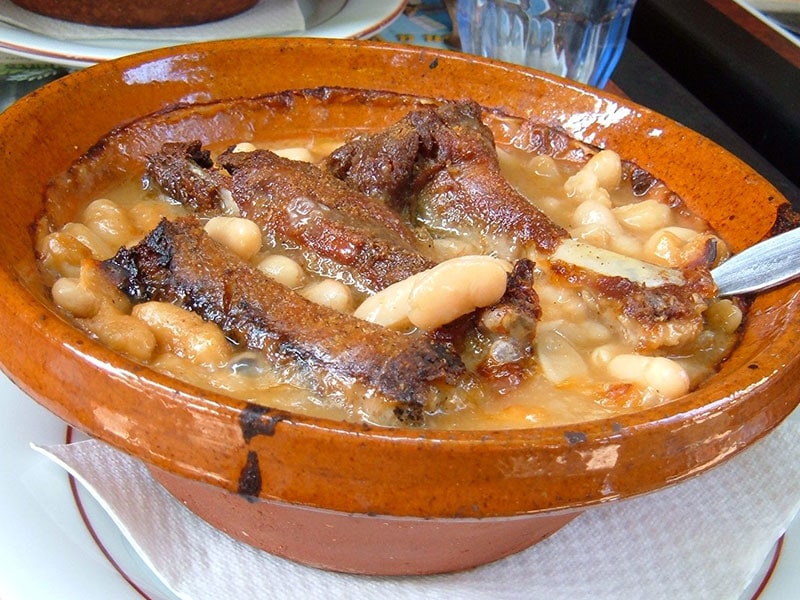
Caçolet (also known as cassoulet) is a slow-cooked casserole dating back to the 14th century. This yummy dish offers a complex blend of flavors from white beans, pork sausages, and mutton, which are cooked in an earthenware pot. Some regional variants may feature duck or goose.
The dish’s legacy connects to the Hundred Years’ War, when French peasants supposedly pooled together ingredients to feed themselves and the soldiers, creating Caçolet. After remaining a poor man’s food for centuries, Caçolet entered French haute cuisine in the 19th century.
Exploring the Diversity and Richness of European Cuisine
European Fruits and Vegetables
Europe’s ideal climates and soils yield a bounty of fruits and vegetables. The Mediterranean region is suitable for cultivating olives, grapes, tomatoes, and citrus fruits. Northern European countries grow apples, pears, a variety of berries, and root vegetables like potatoes and turnips.
Meanwhile, cabbage and beetroot are popular European vegetables in the central and eastern regions, the key ingredients in dishes like sauerkraut and Borscht.
Traditional Cooking Techniques in Europe
Let’s go through a few distinct European cooking techniques. The French love “sous vide,” which involves sealing food in an airtight bag and cooking it in warm water. The UK and Ireland are known for “roasting” seen in their traditional Sunday roasts (consisting of meat and gravy).
The Mediterranean region is renowned for its grilling method used in dishes like Italian bruschetta (a starter dish made with garlic grilled bread) or Greek souvlaki (grilled meat). Not only meats but delicious European fruits and vegetables can be cooked this way, too.
In Eastern Europe, pickling and fermenting techniques are very popular. Meanwhile, baking is also widely practiced across the continent, from breads and pastries to savory dishes like pizzas and lasagnas.
European Desserts
Trying all the indulgent desserts from Europe is a dream for many people with a sweet tooth. France is renowned for its pastries like croissants and tarts. Italy offers gelato, tiramisu, and cannoli, while Spain is known for churros.
The UK offers sticky toffee pudding and trifle, while Germany is famous for its strudels and Black Forest cakes. Eastern Europe boasts a variety of sweets, including the Hungarian sponge cake Dobos Torte and Polish Pączki (filled doughnuts).
European Beverages
From Italian espresso, Spanish sangria, and British tea to French champagne and beers of Central European countries, there are so many wonderful European drinks to discover.
Spirits are also prevalent, with vodka from Russia and Poland, whiskey from Scotland and Ireland, and Cognac from France, among others.
European Street Foods
The delicious street food items in Europe provide a glimpse into the continent’s everyday culinary life. In Italy, one might find pizza al taglio (pizzas sold by the slice), while the UK is famous for its fish and chips. And everybody knows about Spanish tapas.
Greece is known for its souvlaki, and France for its crêpes. In Germany, currywurst (sausage and curry ketchup) is a popular choice, while Eastern Europe features staples like Pirozhki (savory hand pies). Meanwhile, the Turkish-influenced Döner Kebab can be found in many European cities.
FAQs
Savor The Old World Like A European!
Picture yourself strolling through the bustling streets of Italy, filled with the tantalizing aroma of freshly baked pizzas. Or sitting at a charming eatery in Spain and savoring a warm bowl of paella. Traditional European dishes truly capture the heart and soul of the regions they originate from.
That is an adventure too good to miss, and I encourage you to embark on it! Do you have a favorite dish or recipe? Don’t hold back; add your comments below! If you find this article useful, share it and hit that like button.
References
- Columbian Exchange (2023) Encyclopædia Britannica.
- Published by Statista Research Department (2023) Czechia: Beer consumption per capita 2021, Statista.
- Unesco – gastronomic meal of the French (no date) Intangible Cultural Heritage.

